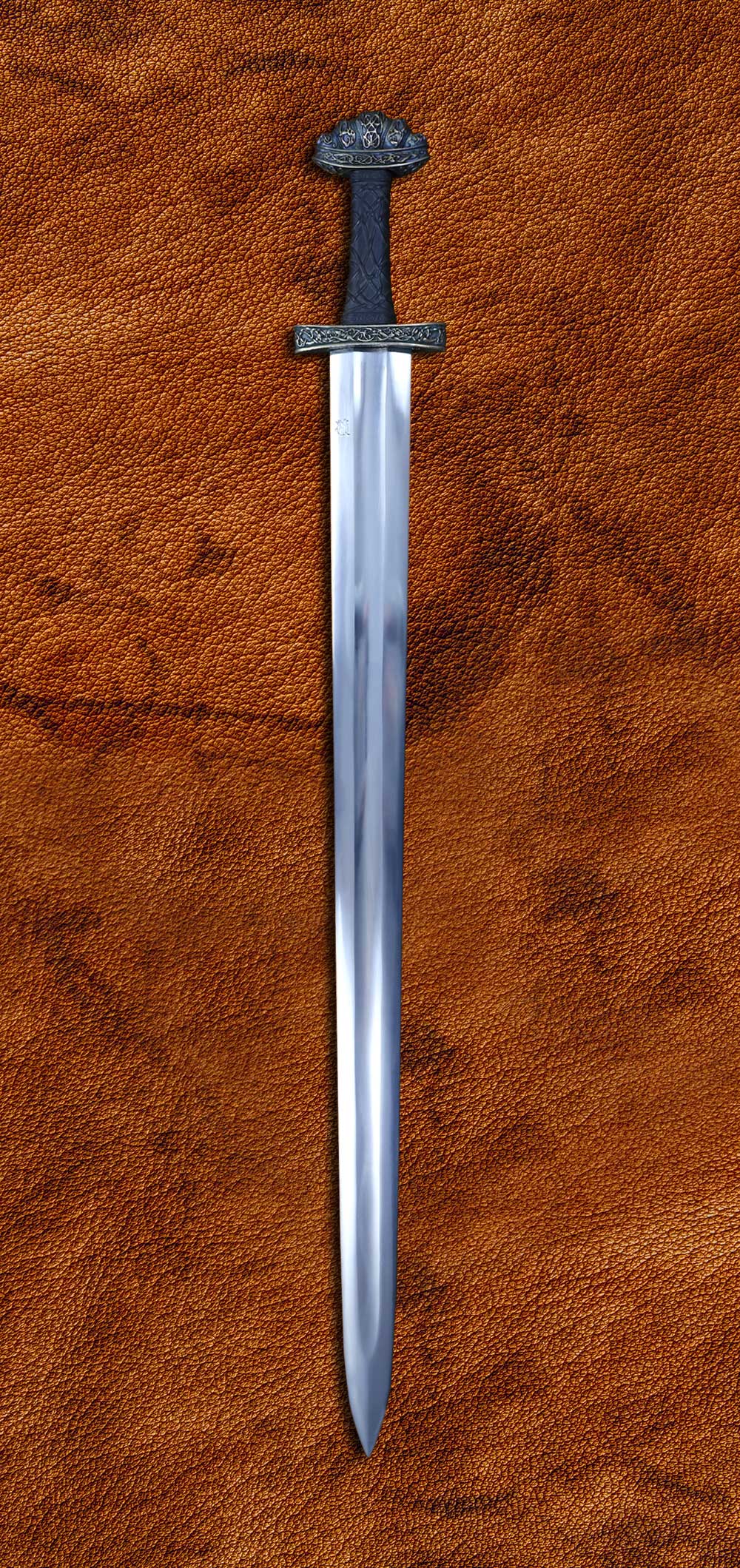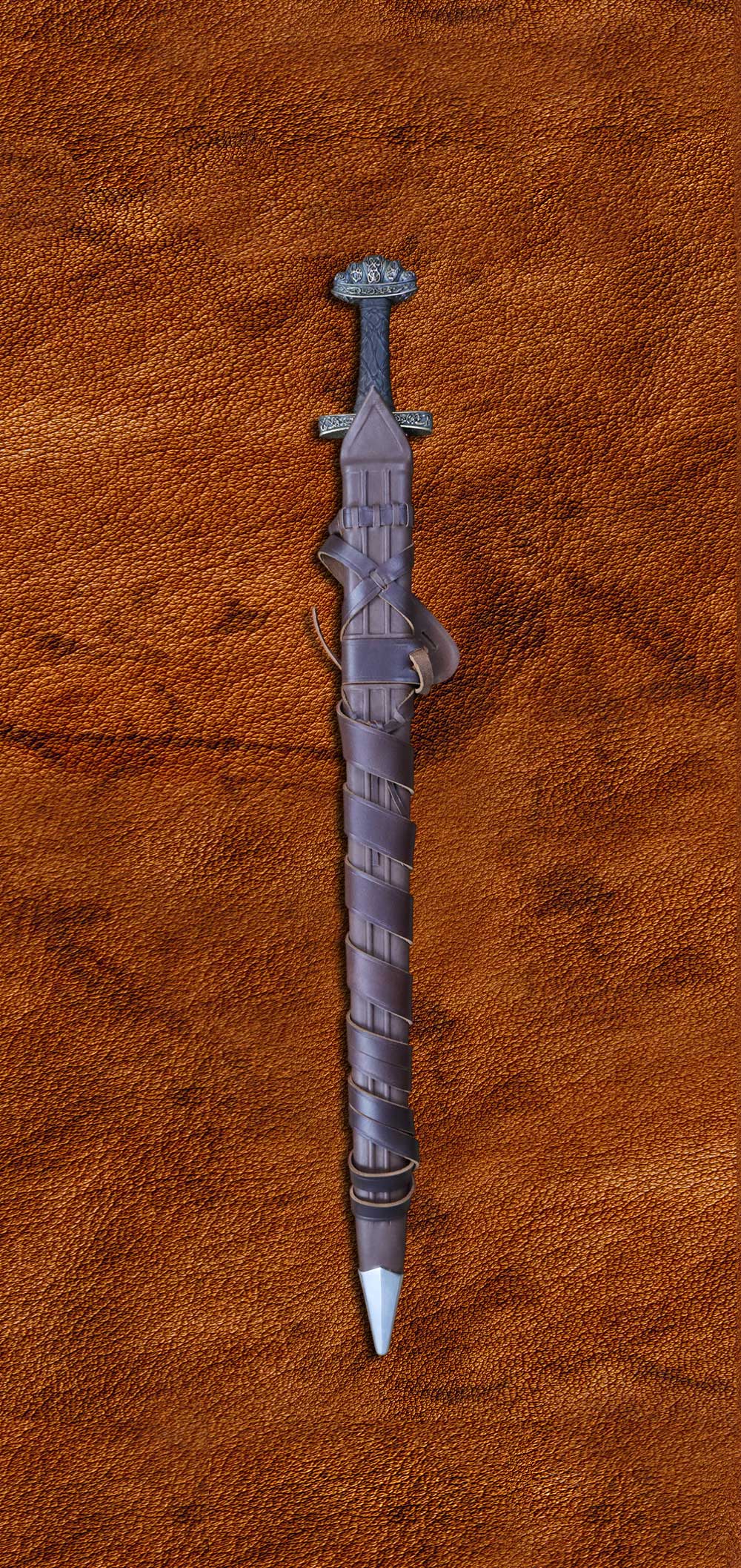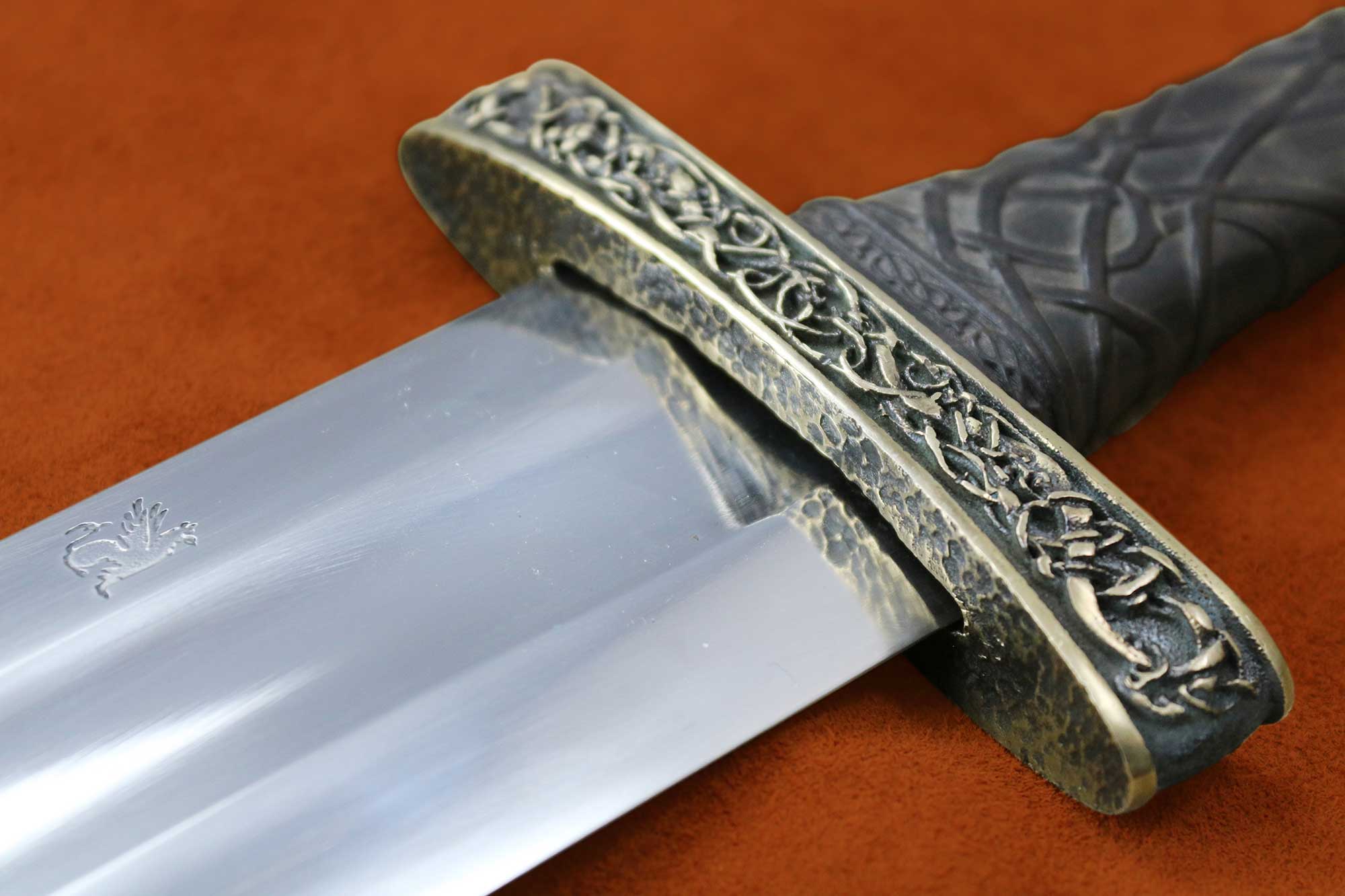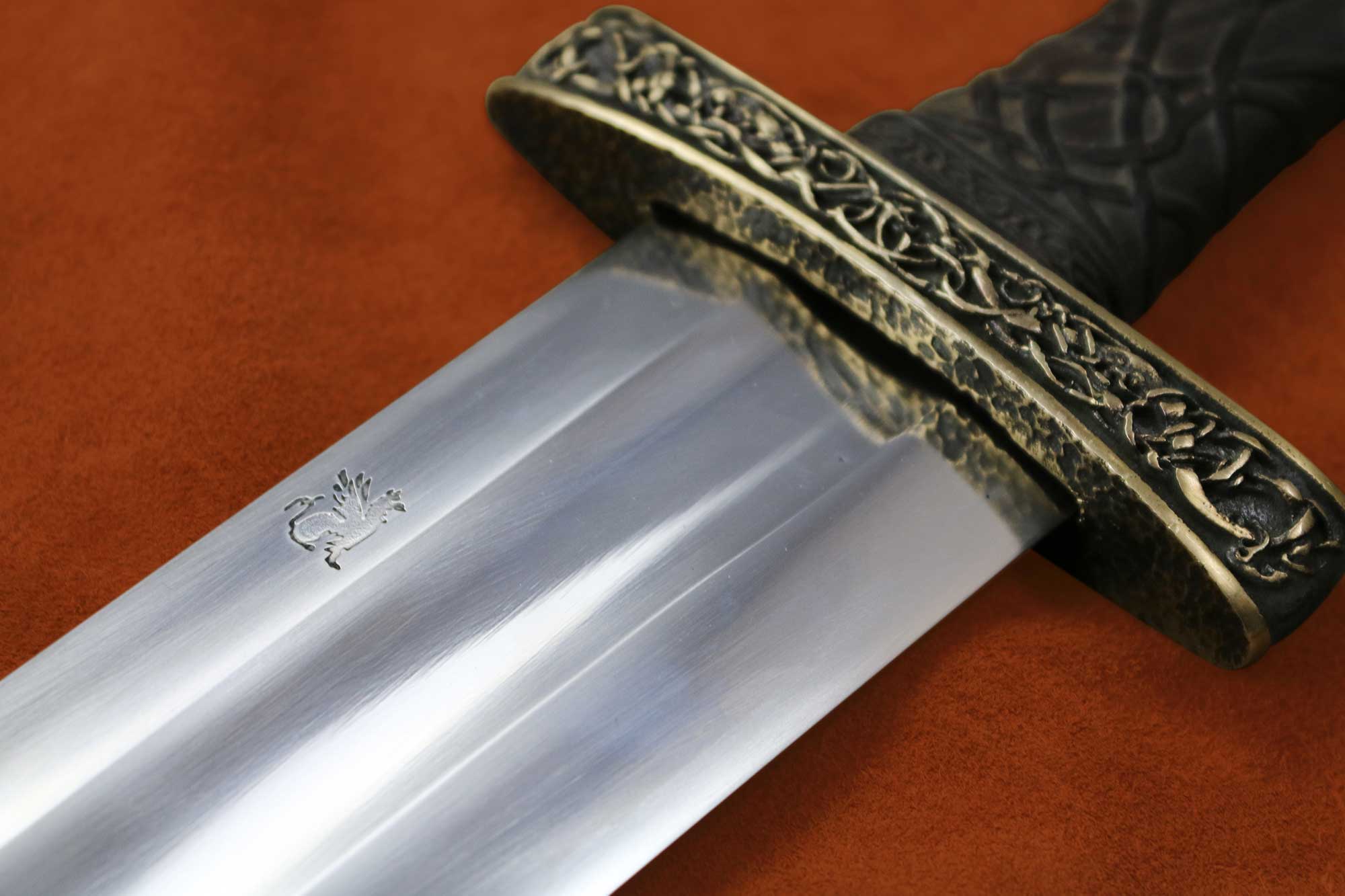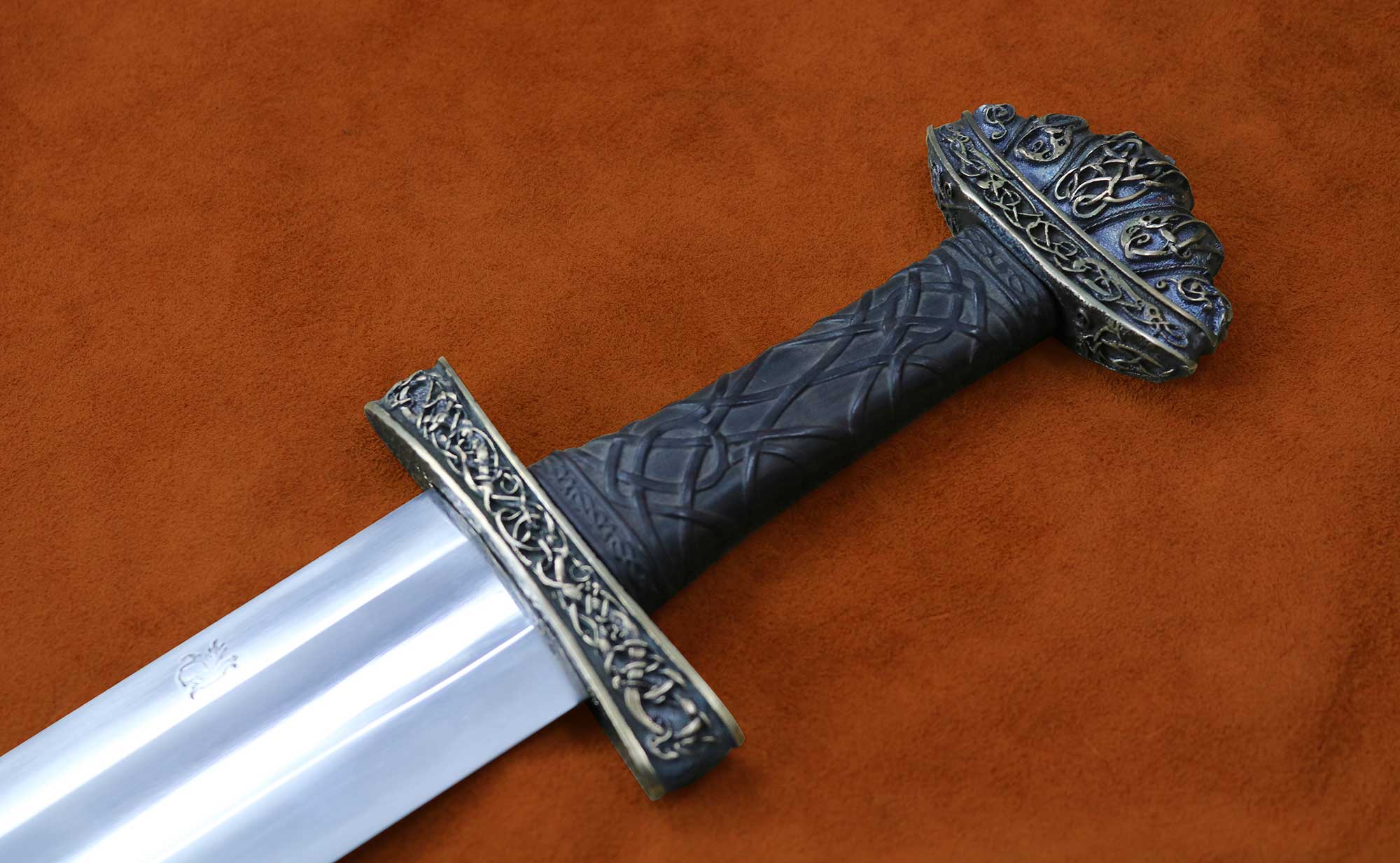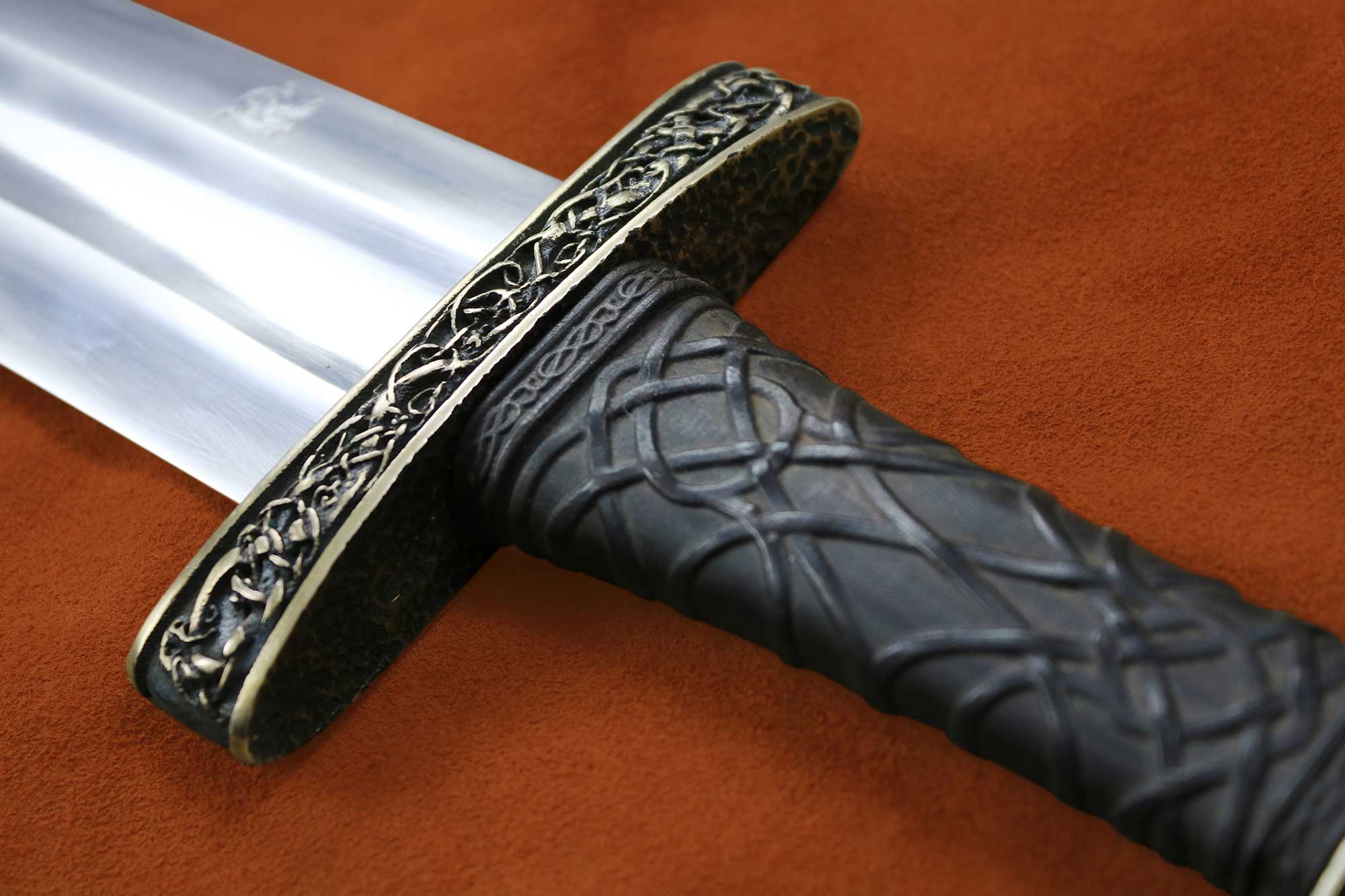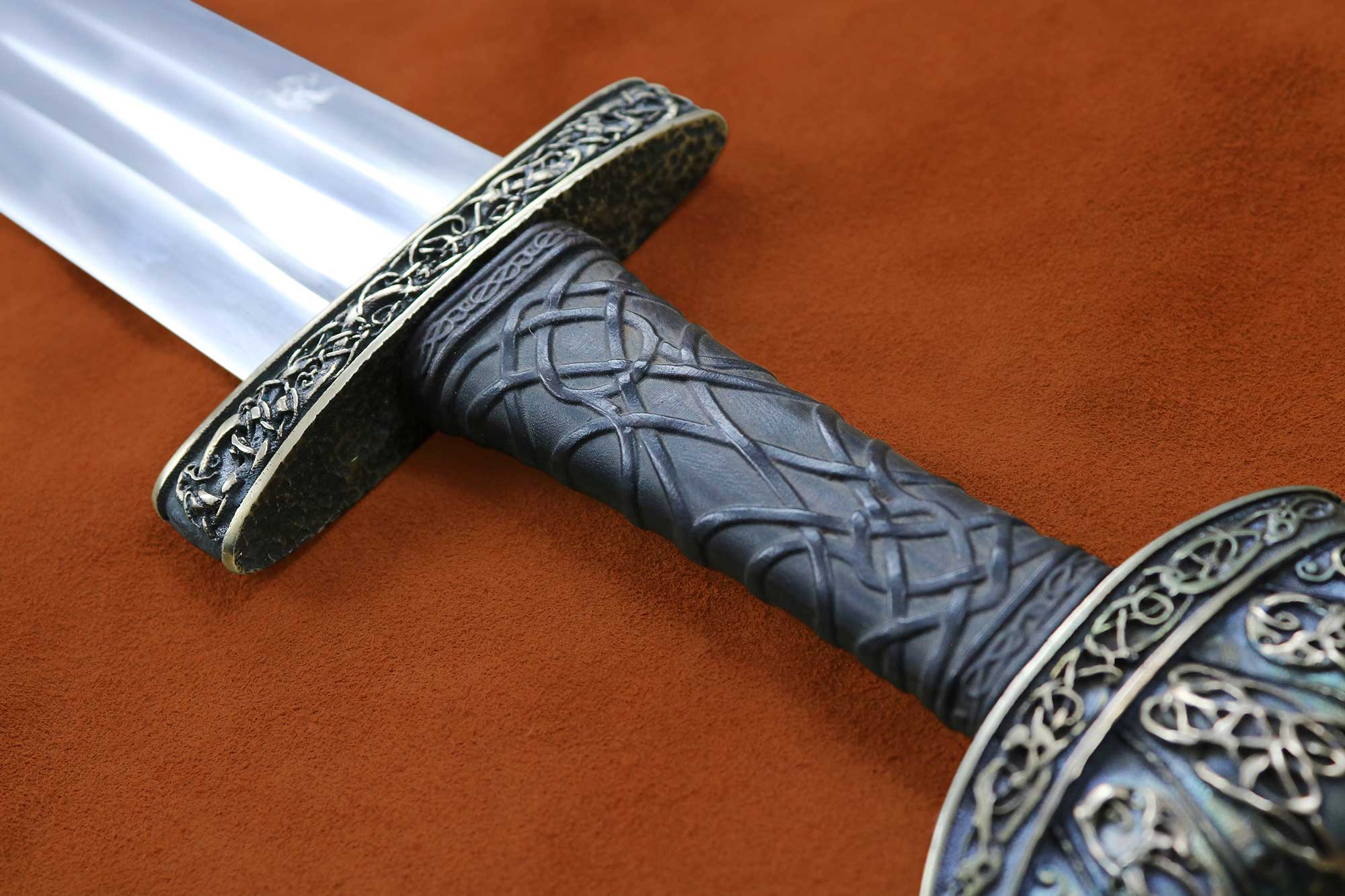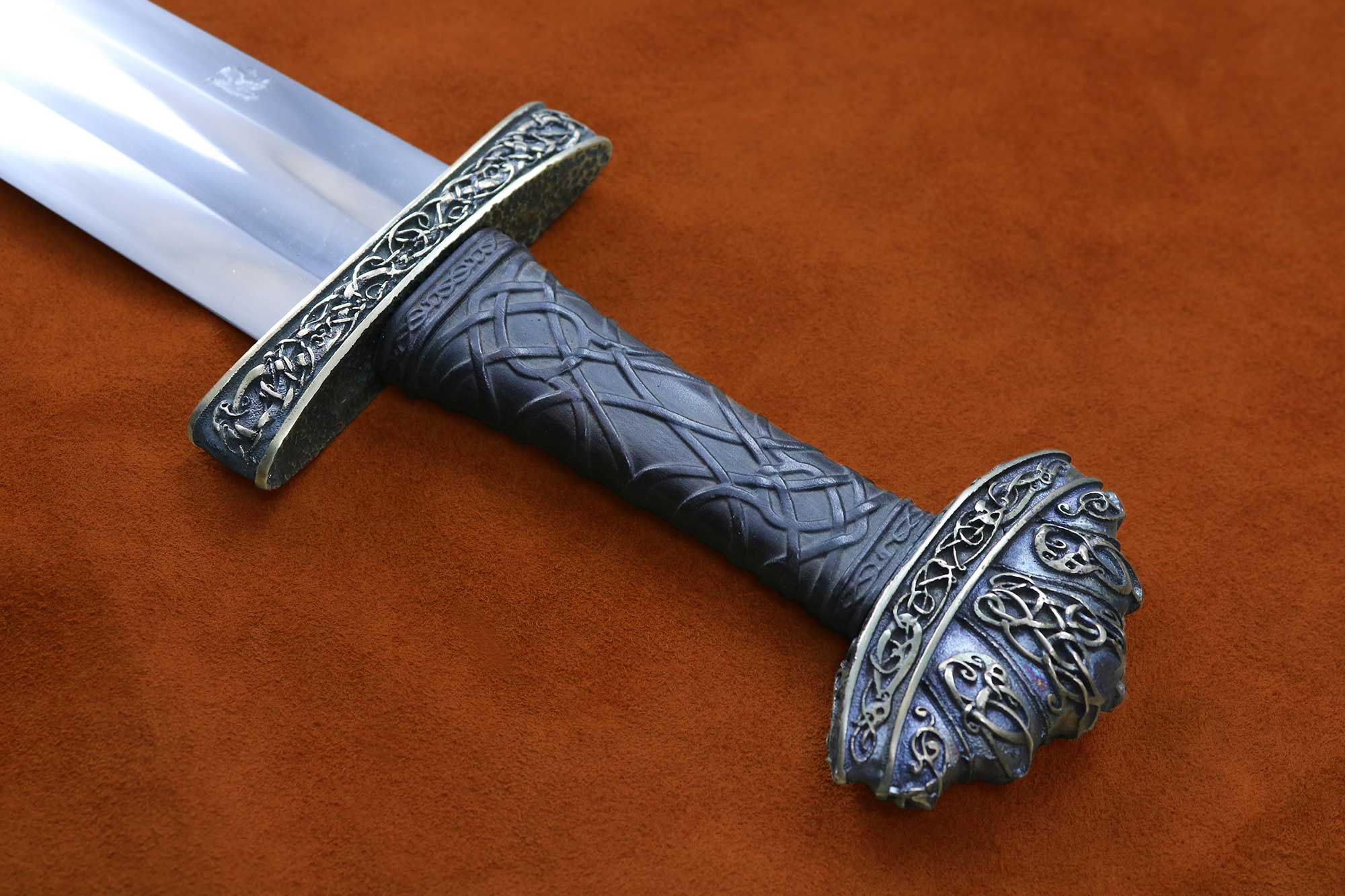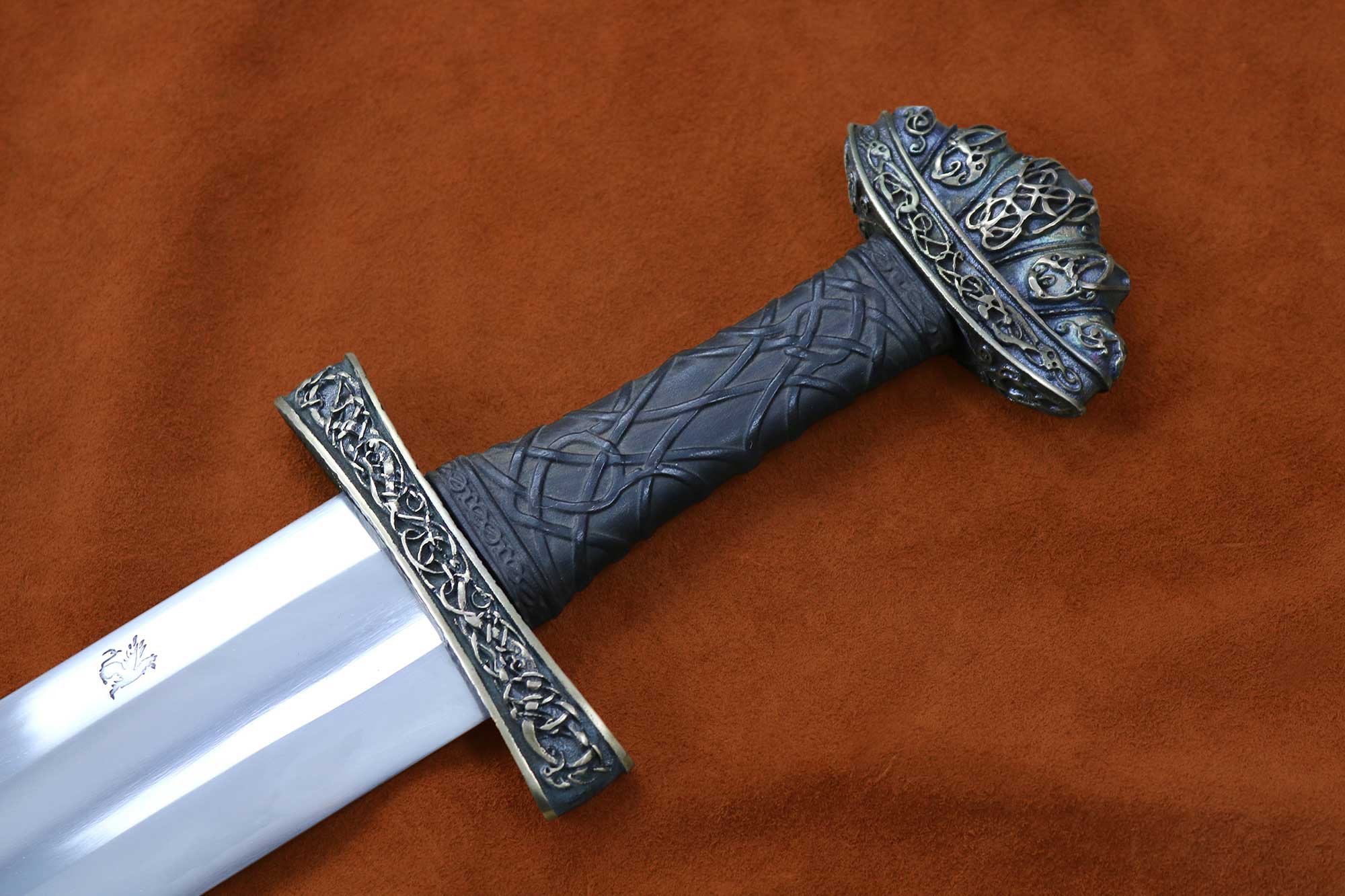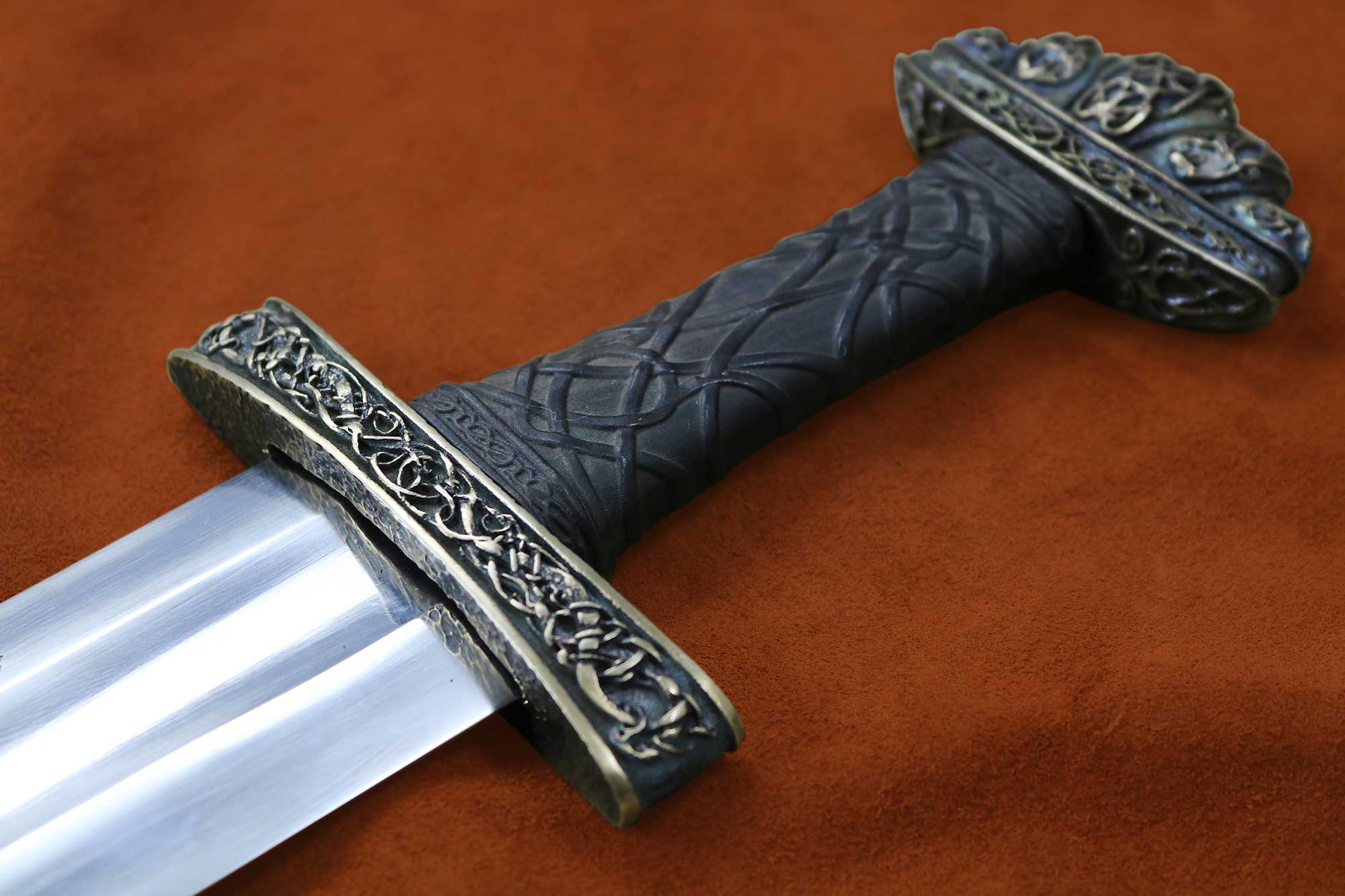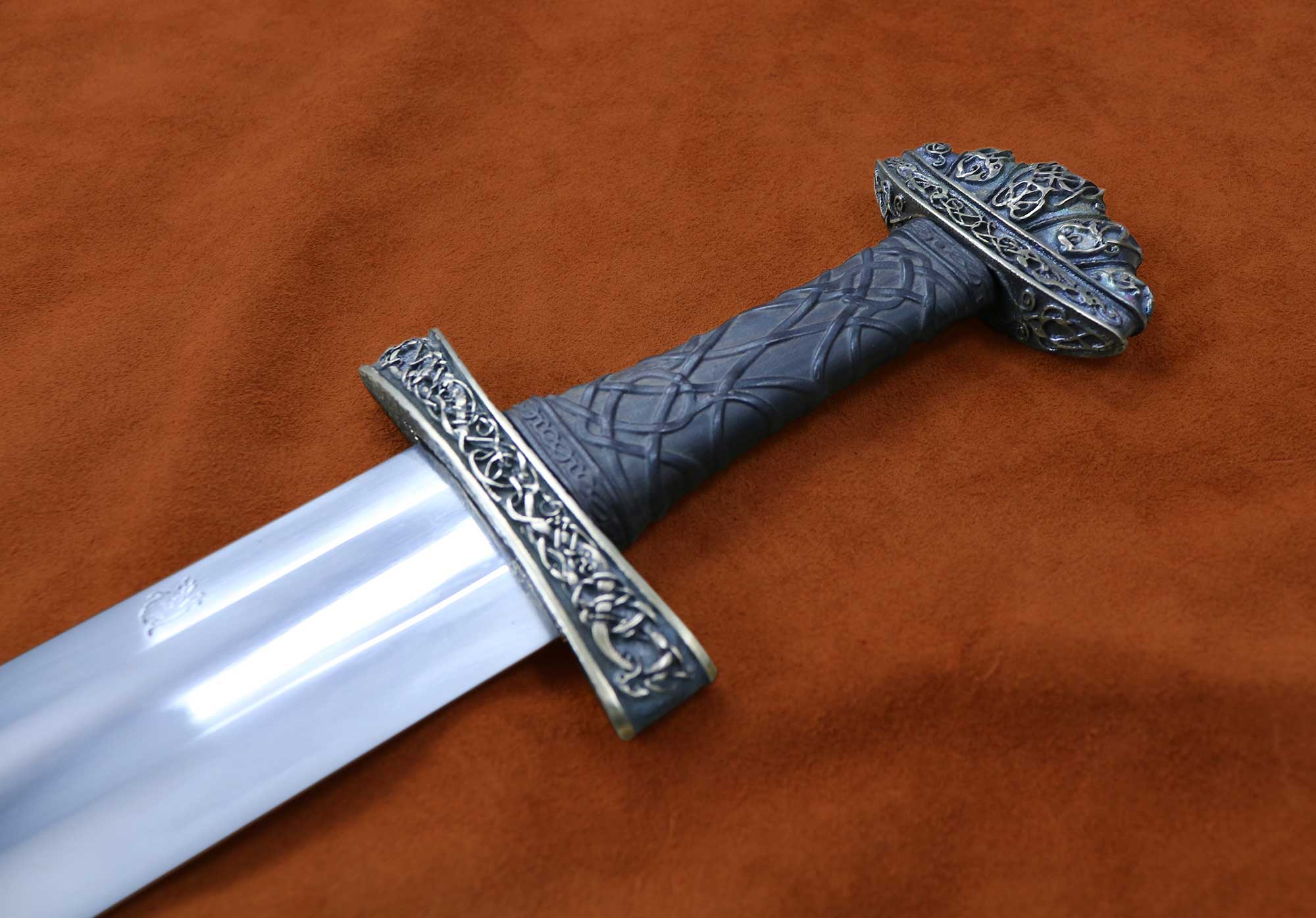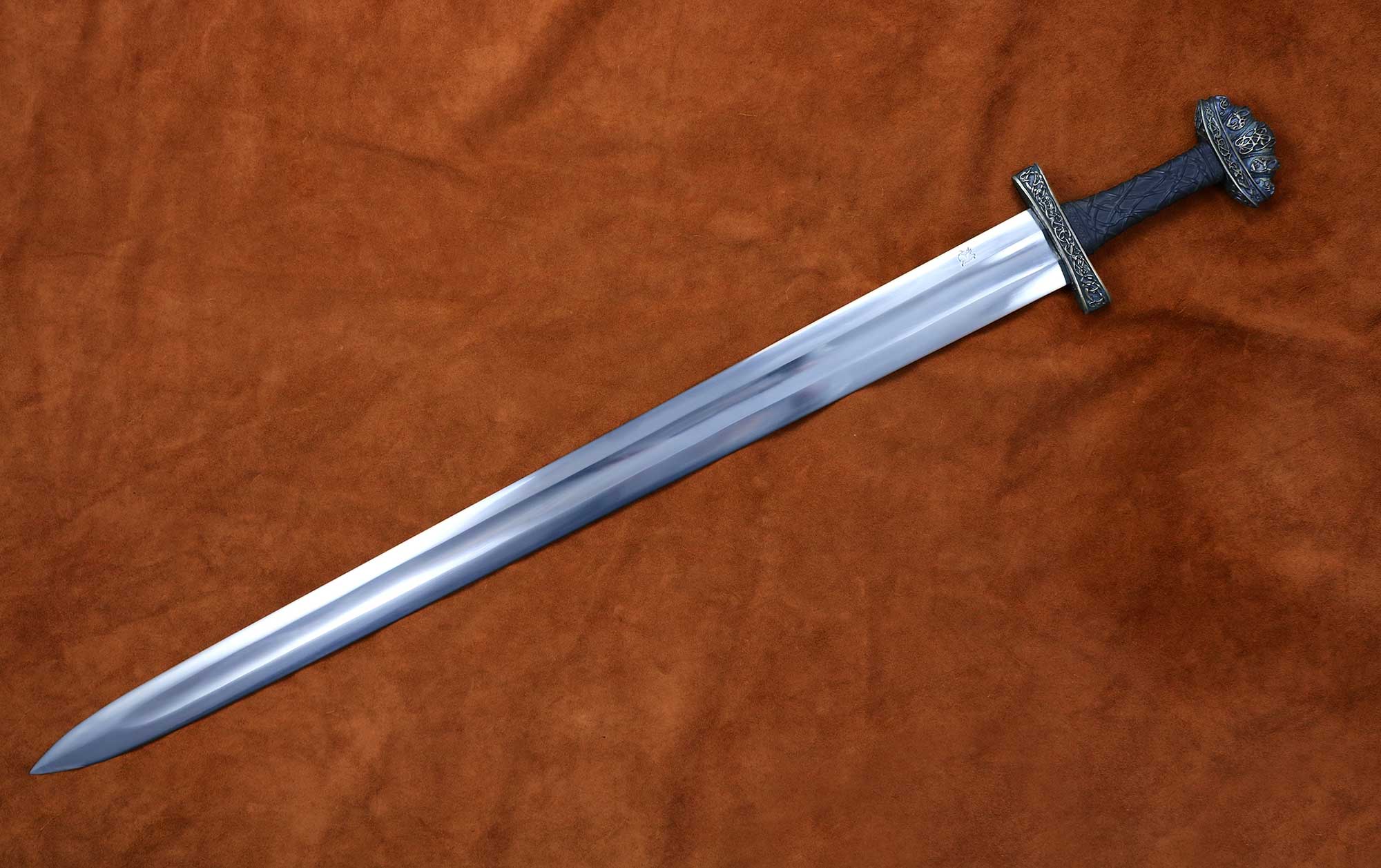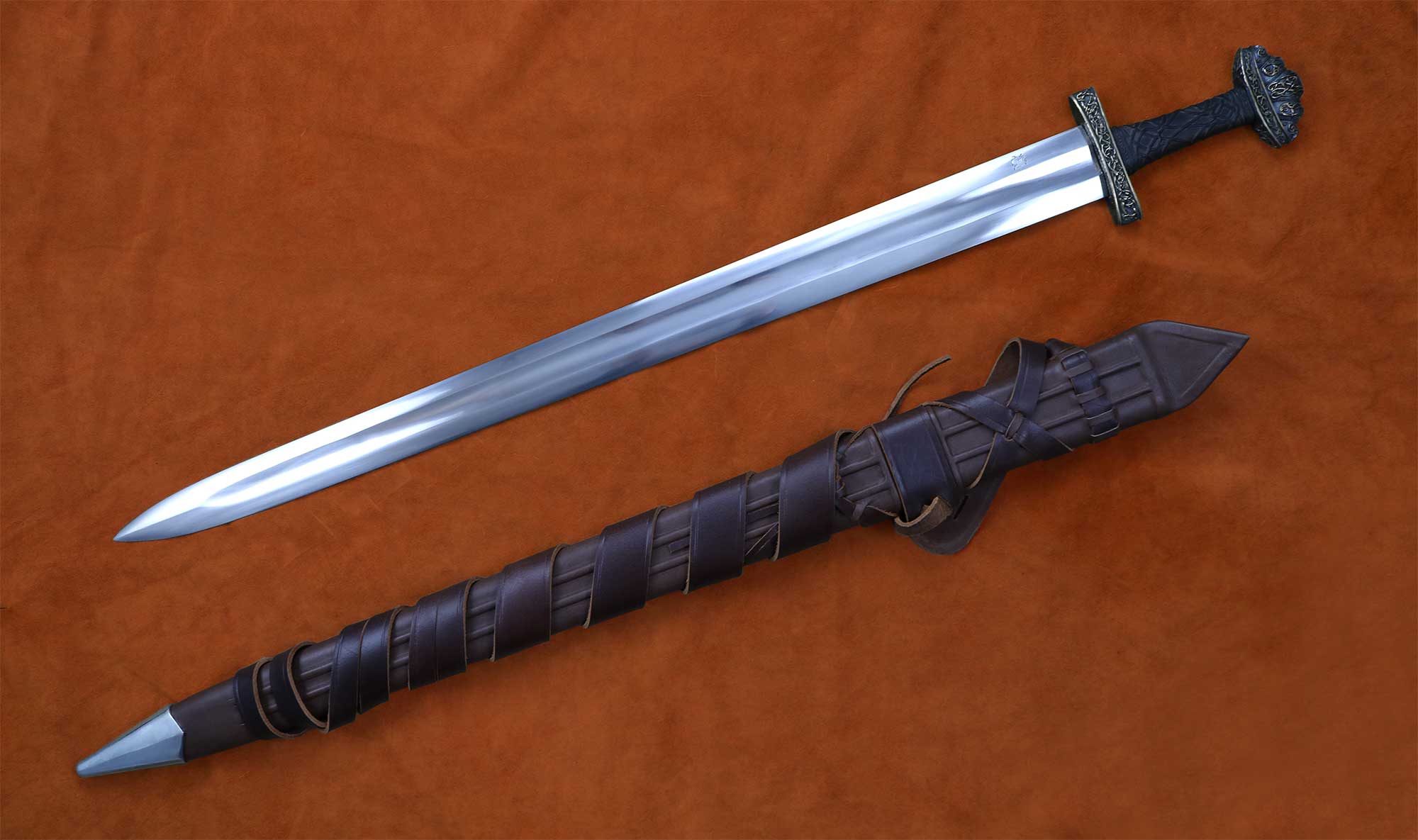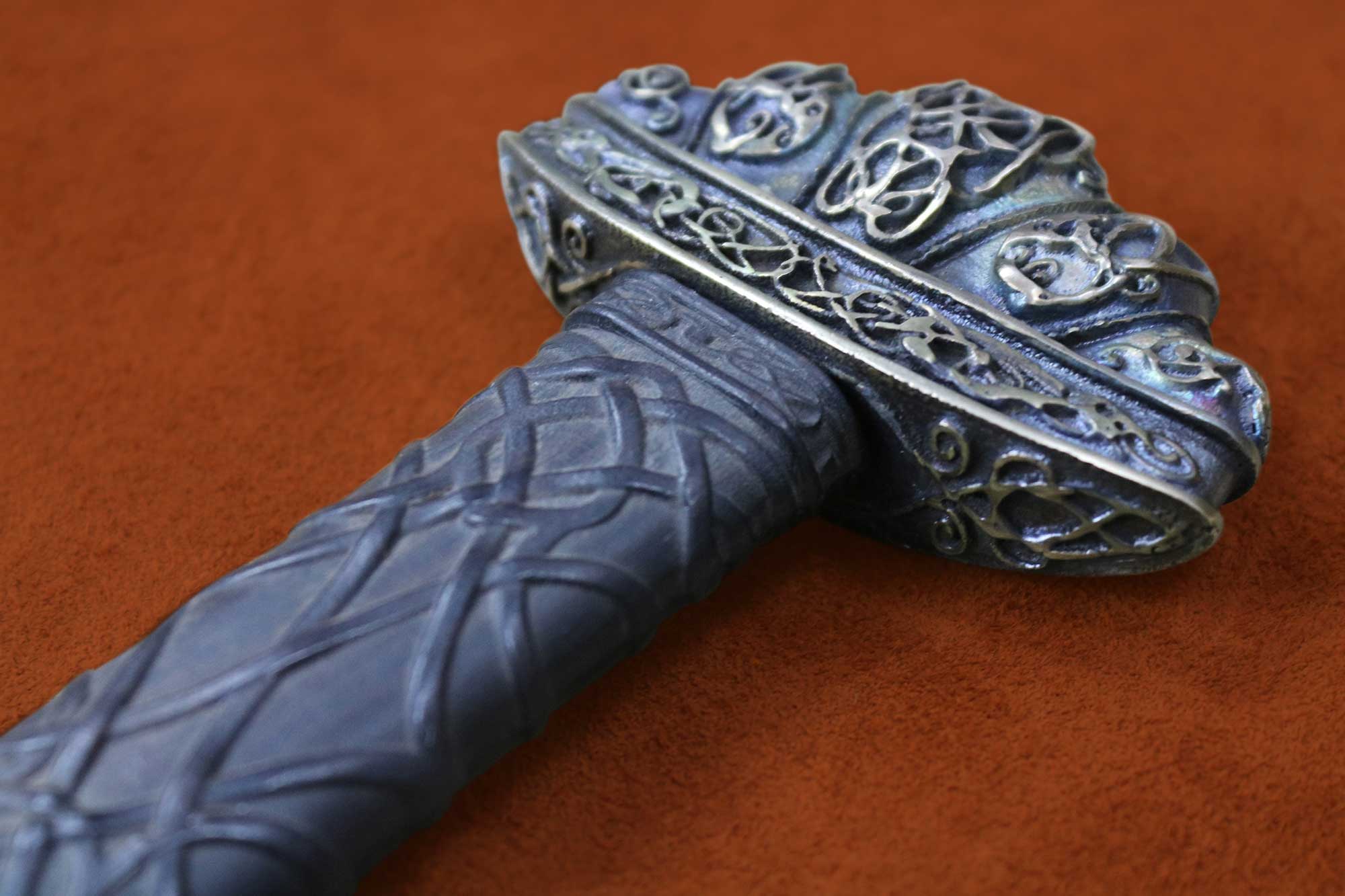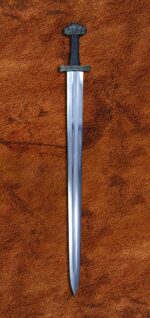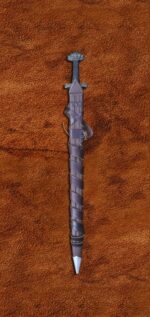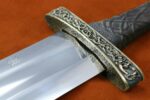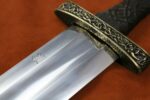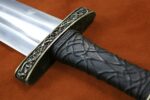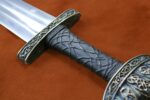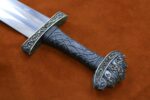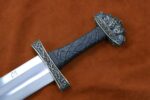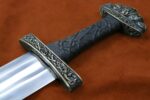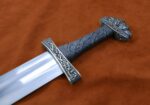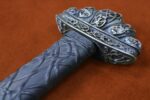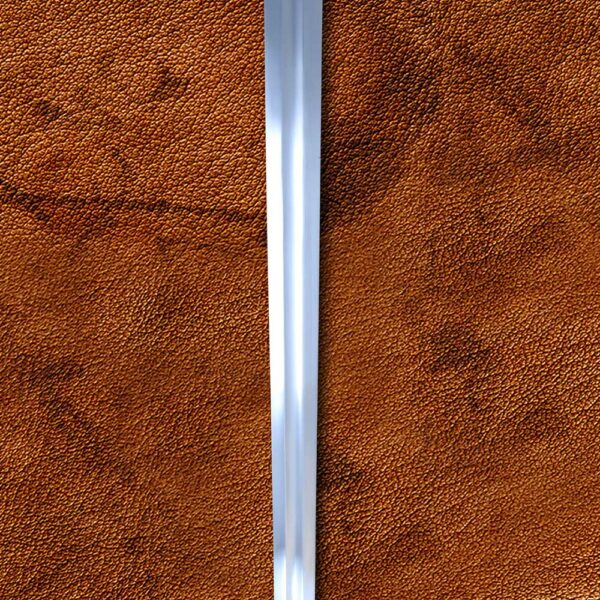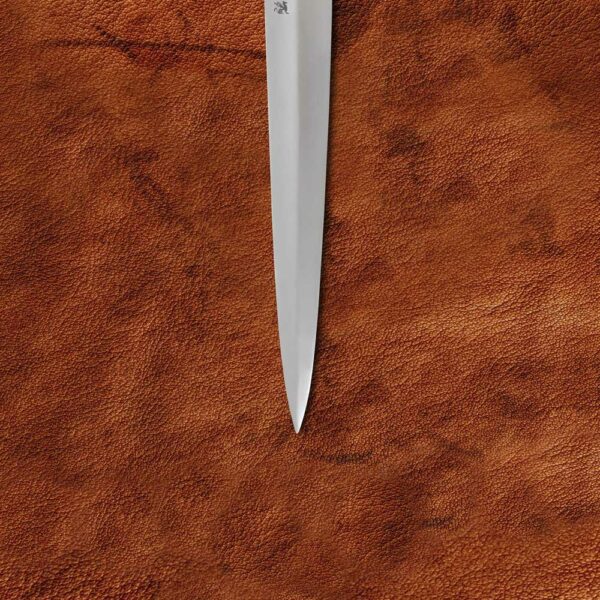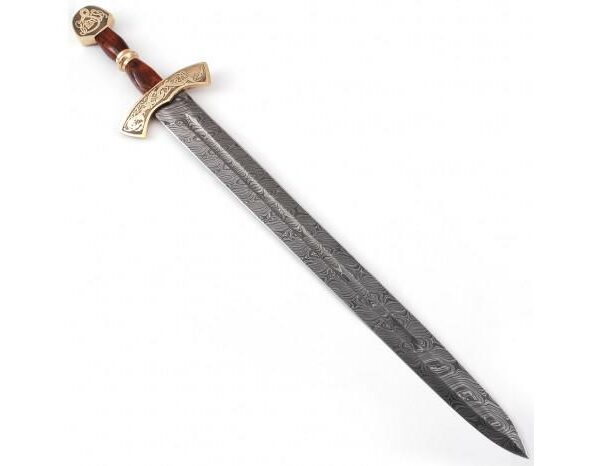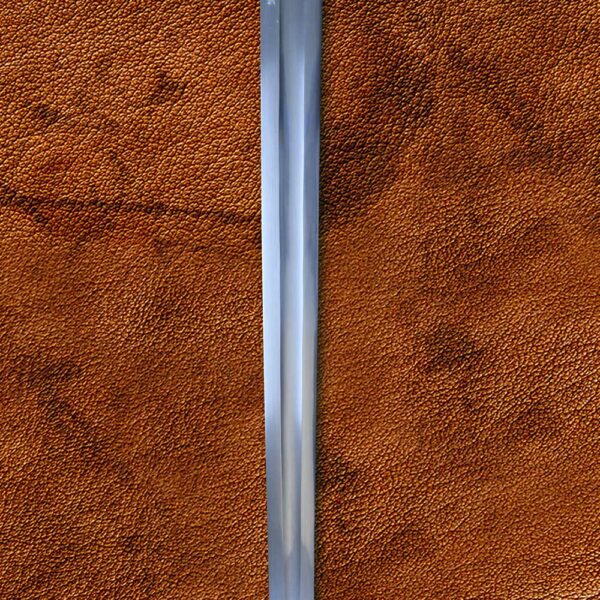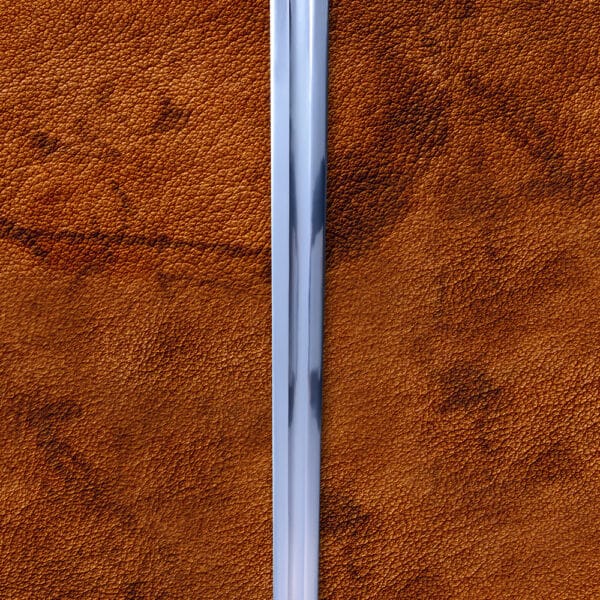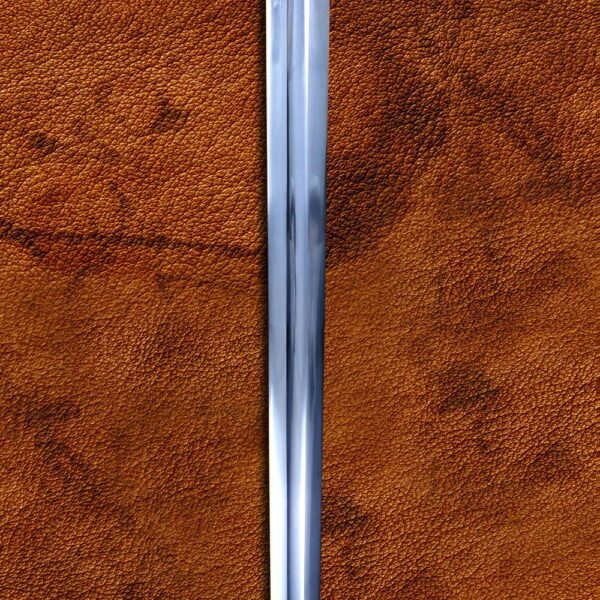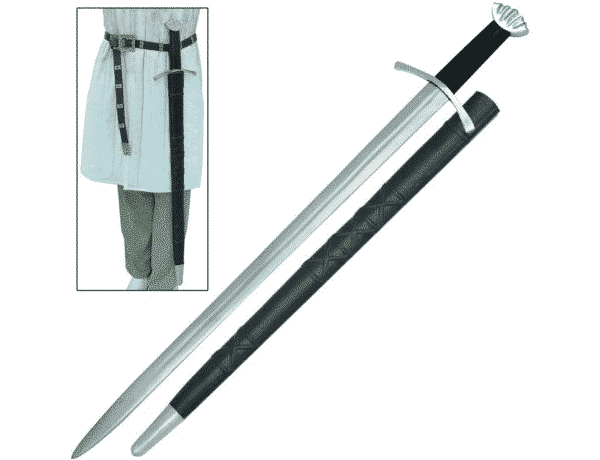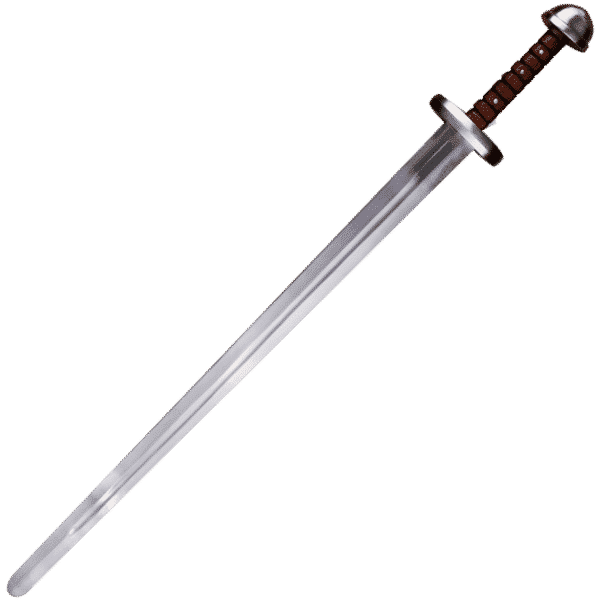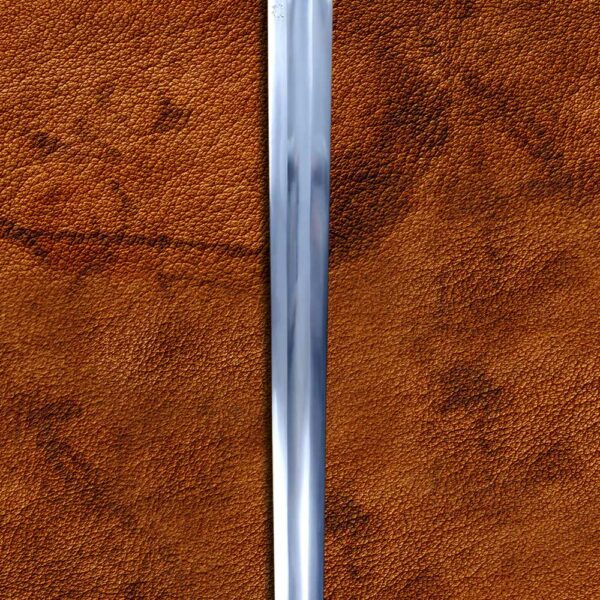(About): The Sword at the Cusp of the Medieval World
The blade of the Urnes Stave sword is an absolute classic of Viking design. It hails from the 11th-century high-point of Viking society, as the Norse peoples had moved away from mere raiding into becoming masters of sprawling maritime empires like the North Sea Kingdom which united Norway, Denmark and England; when they had established thriving trade routes with everyone from the nearby Atlantic seaports of the Franks, to the exotic markets of the Islamic Maghreb; when they had seeded colonies from the Kievan ‘Rus to Iceland, and even a tenacious, rugged toehold in North America. The Urnes Stave Sword combines the historical innovations imbued into the first all-steel swords made in Europe, with the spectacular artistic style seen in the 11th-century carvings on Urnes Stave Church to create a truly special sword that you will want to become your family’s own gomele-lāfe, or ‘ancient heirloom’.
A Blade the Equal of A Vikingr’s Best
Darksword Armory are famous in the re-enactment, HEMA and roleplaying communities for the meticulousness of their historical production techniques, and the Urnes Stave Sword absolutely confirms the commitment of their master artisans to their craft. It is hand-forged from modern 5160 spring steel. Historical Viking Age swords were of variable quality, but the very best would be the equal of anything that a modern smith could make, and were often handed down as heirlooms for many generations – indeed, the Anglo-Saxon poets who composed Beowulf and other contemporary epic poetry frequently use the term gomele-lāfe, ‘ancient heirloom’, interchangeably to mean ‘sword’. 5160 spring steel would be the envy of any vikingr warlord because it is the gold standard for tough modern reproduction weapons: it has been master-forged and heat-treated using Darksword Armory’s signature dual-temper heat treatment, resulting in a Rockwell hardness of 60 at the edge, with a core of 48-50 to provide flex and resilience.
Another useful feature is that it includes a small percentage of chromium, making it stainless and corrosion resistant – which would have been terribly useful for archaeologists who hanker after more complete swords surviving from the Viking period! (That said, we highly recommend that you keep your Urnes Stave Sword dry at all times, especially whilst in storage. Or have your húskarl do it.)
A Hilt Inscribed with The Highest Viking Art
The hilt of our Urnes Stave Sword is a fantastic testament to the processes of experimental archaeology which blacksmiths have used to minutely re-create the Viking crafts of the past. Some of the finest Viking objects were made using the ‘lost-wax process’, where clay moulds were made by cladding a finely carved wax object, which would melt and be ‘lost’ during the firing of the clay. Darksword Armory’s artisans have used precisely this process to create their moulds for the stunning decoration of the Urnes Stave Sword hilt. The inspiration for their artwork is drawn from across the medieval Norse world, but it pays particular homage to the Urnes Stave Church, a beautiful wooden structure in Western Norway which hold some of the most important and most evocative examples of Viking art. The flowing animalistic style consisting of contrasting thick curves and thin wispy tendrils is instantly recognisable, and is picked out in incredible detail by the expertly cast bronze. It continues onto the exquisite decorative hand-grip, engraved onto ebony hardwood.
Overall, our Urnes Stave Sword is an elegant piece of historical reconstruction, uniting modern materials with the time-honoured designs and techniques used in the Viking Age. It is a stunning weapon that would make a fantastic centrepiece for a late-Viking jarl re-enactment, depicting one of the power-players of the High Norse kingdoms. Or, you could incorporate it into a totally different costume: it could be used as the weapon of a Norse-inspired fantasy roleplay outfit, like a barbarian or shield-maiden. It’s even so beautiful as to form a centrepiece of your sword collection, gracing any wall with its stark elegance. It is the kind of sword that you will pass onto your dynasty as a gomele-lāfe!
(History): The Urnes Style
The artwork incorporated into our Urnes Stave Sword takes its inspiration from (arguably) the most important piece of Viking architecture still in existence. The Urnes Stave Church is a gorgeous late-Viking ‘stave church’, a typical style of Viking church construction, named after the tall stav posts which support their characteristic steeply pitched compound roofs. The stave church overlooking the fjord at Urnes was likely built around 1130 CE, making it one of the oldest standing structures in Scandinavia, but crucially its makers decided to re-use some timbers from an earlier building, likely an earlier church on the same site. Amongst these re-used timbers, which were already a century old in the early 1100s, was the older church’s west-facing main door, which was turned into a small portal on the new church’s north wall. The elaborate carvings on its timber is simply breathtaking, in style and in refinement of craft. It features swirling great beasts, what scholars of Viking art call the ambiguous animalistic forms which dominate the conceptual Viking style, counterpointed by delicate, waiflike tendrils framing and sweeping around the tumbling abstracted forms. These forms are so important in the development of Viking art that they have bequeathed their name to the highest and latest form of Viking art that emerged endogenously in the Norse world.
The ‘Urnes style’ appears on many of the late-Viking runestones in Uppland, Sweden, one of the handful of sources where the Vikings wrote in their own words, and it appears on coins minted by Kings of Denmark like Harald Hardrada and Olav Kyrre. We even know the name of one of the Urnes style’s highest practitioners: Öpir, whose name means ‘shouter’, was a prolific runestone maker, who signature is seen along a distinctive refined expression of the Urnes style across more than 40 surviving examples. Thus, the inclusion of its shapes into the hilt of our Urnes Stave Sword is no mistake: it is the direct descendent of this most regal of art styles, forged as the pagan and Christian worlds merged.
Technical Specifications:
Total length: 36 inches
Blade length: 30 inches
Blade width: 2.3 inches
Blade material: 5160 carbon steel
Guard and pommel material: Solid bronze
Grip material: Ebony
Weight: 3 lbs. 1 oz.

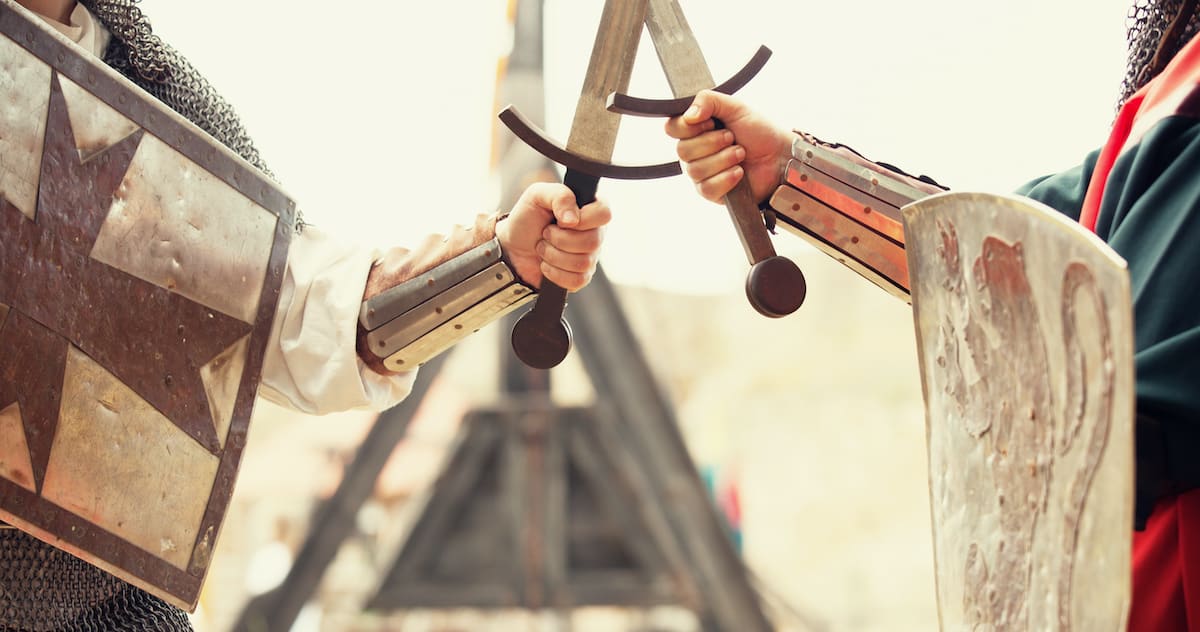 Historical Swords
Historical Swords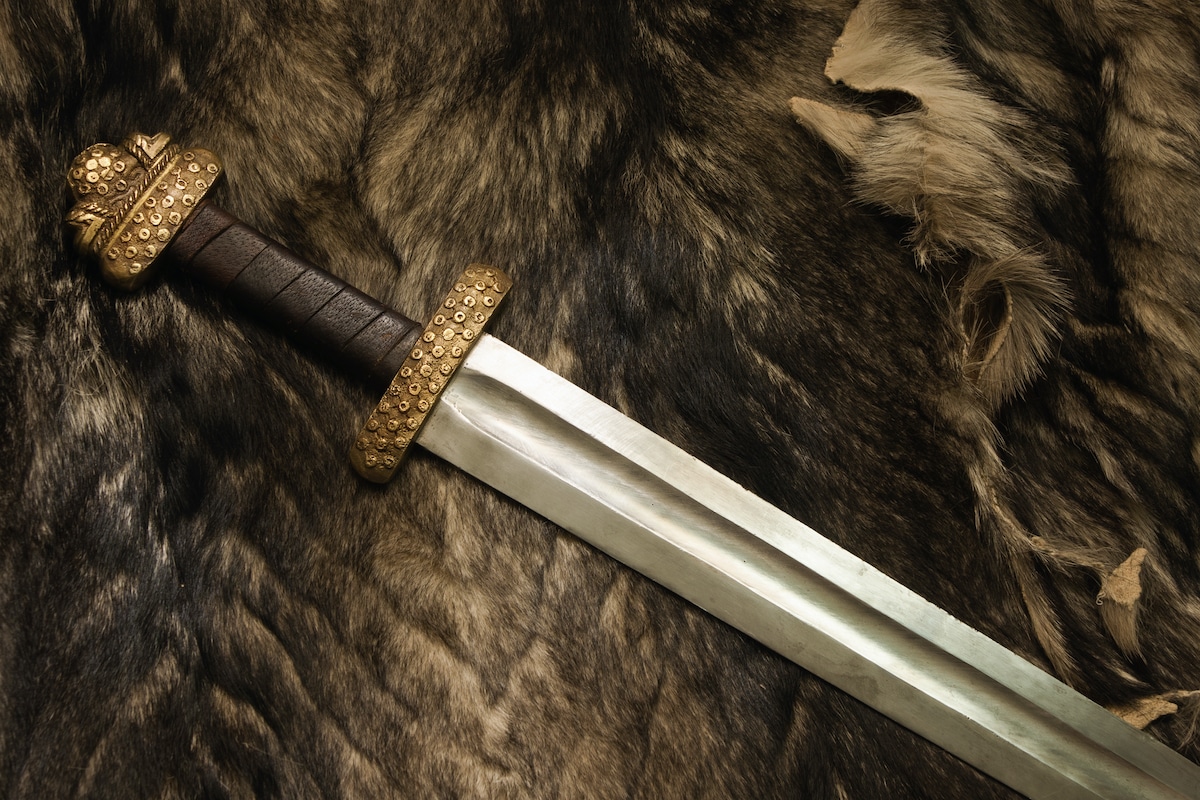 Norse & Viking Swords
Norse & Viking Swords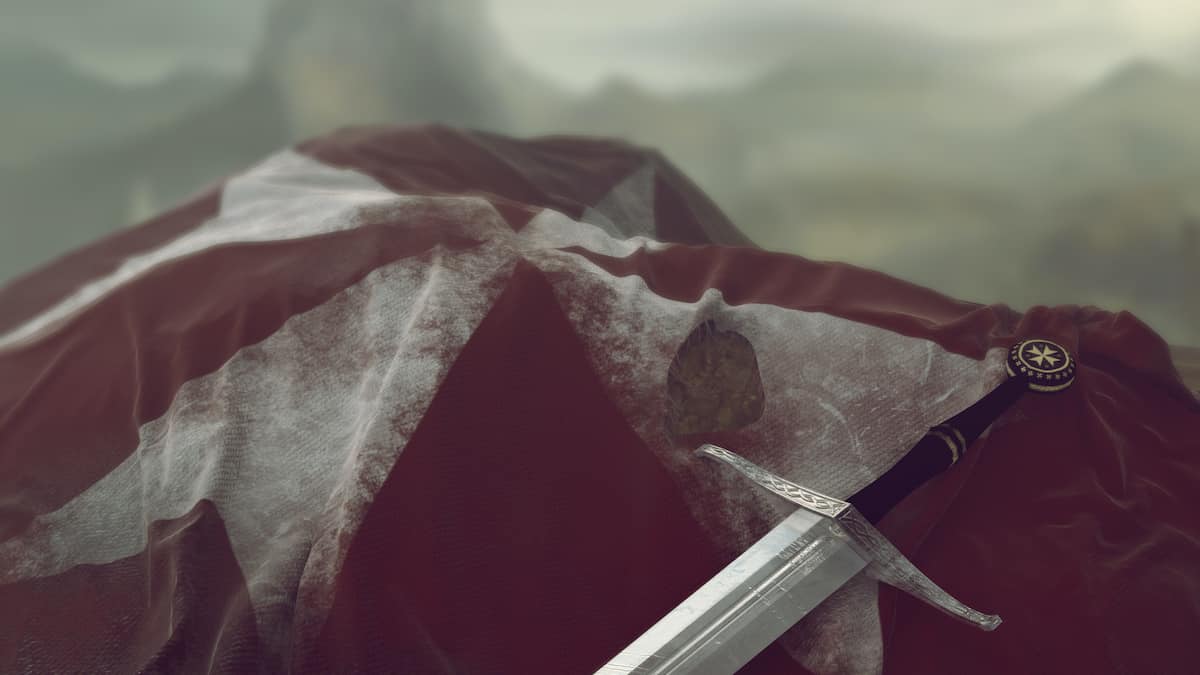 Templar Swords
Templar Swords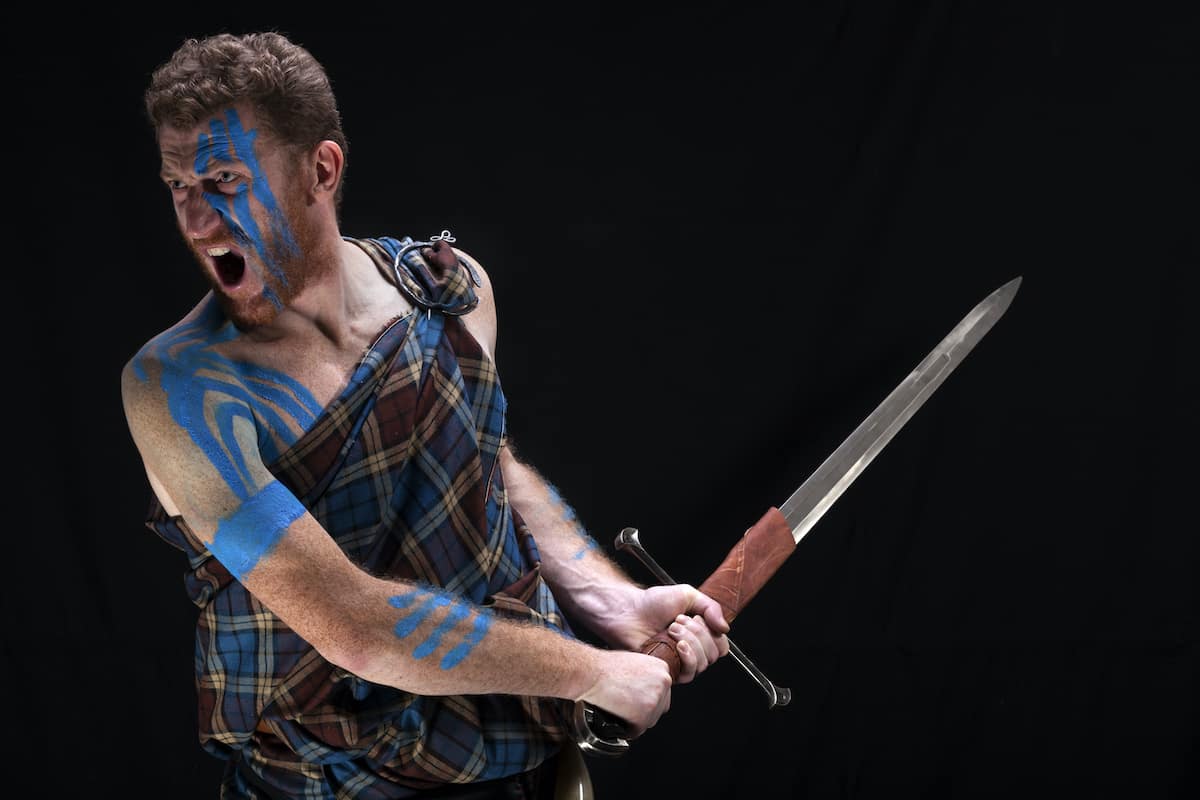 Claymore Swords
Claymore Swords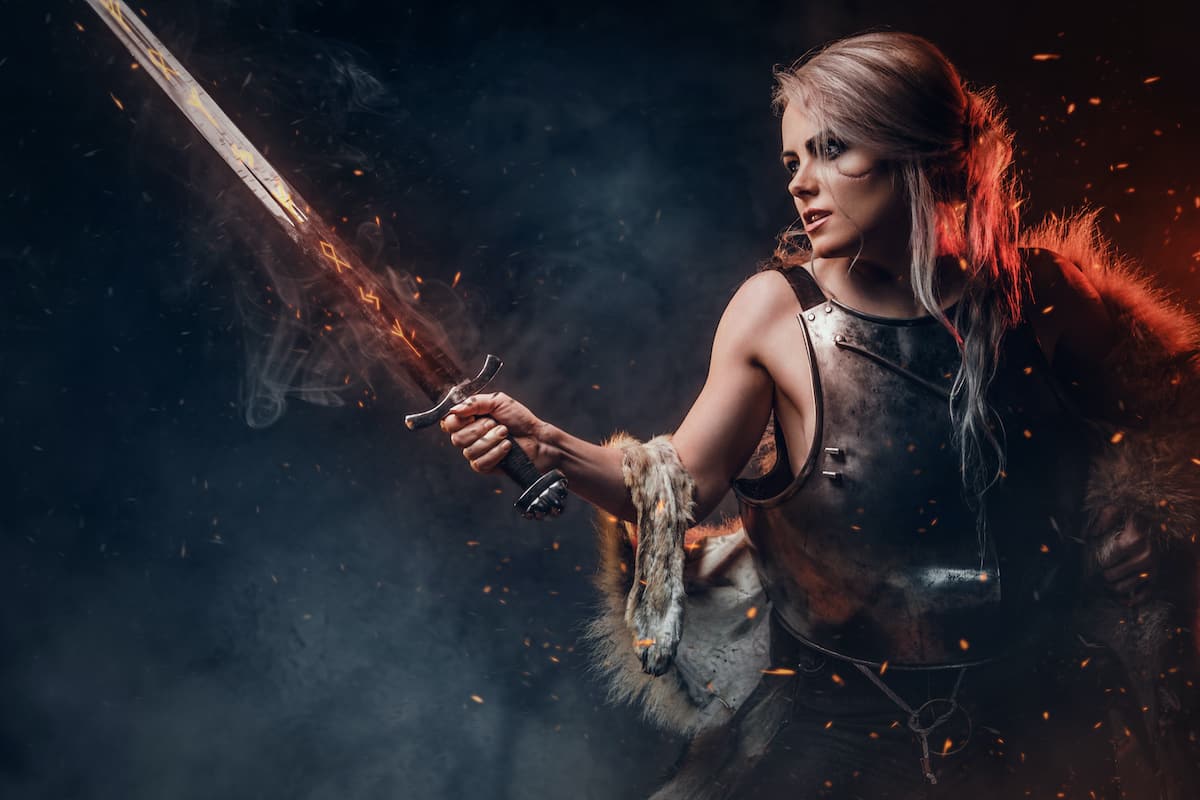 Fantasy Swords
Fantasy Swords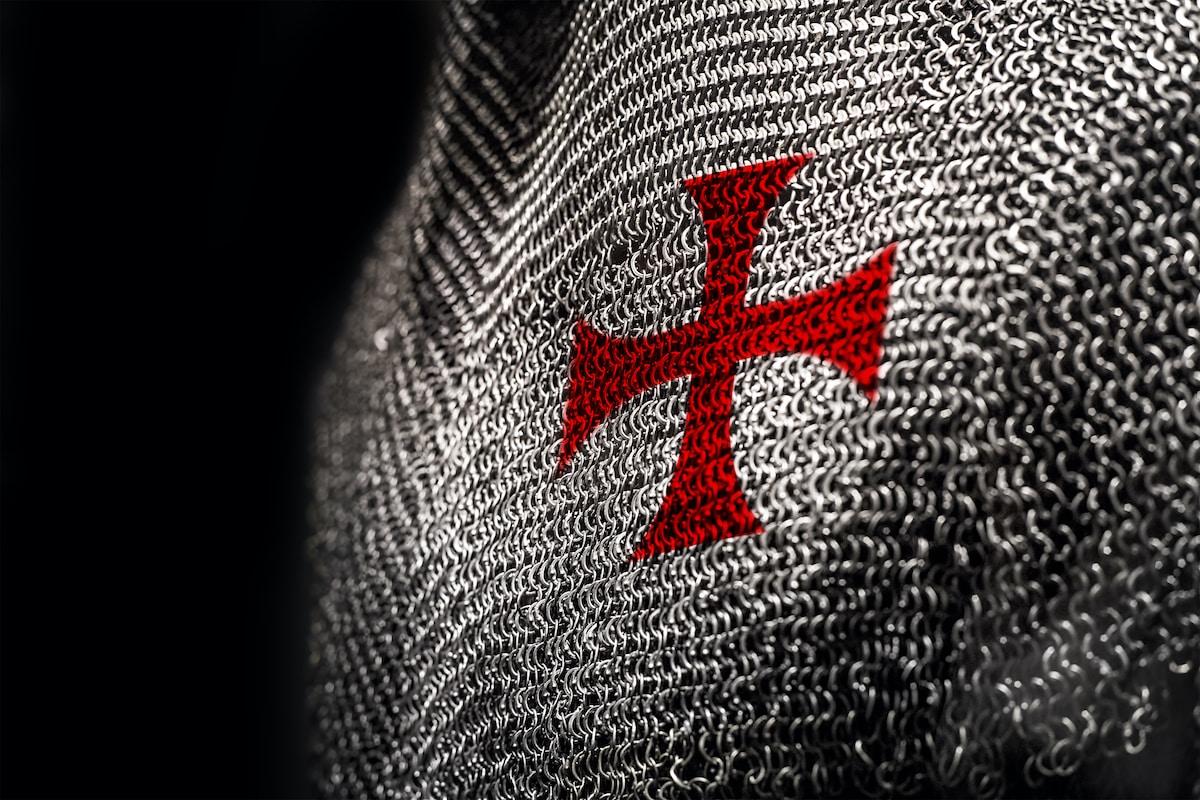 Chainmail
Chainmail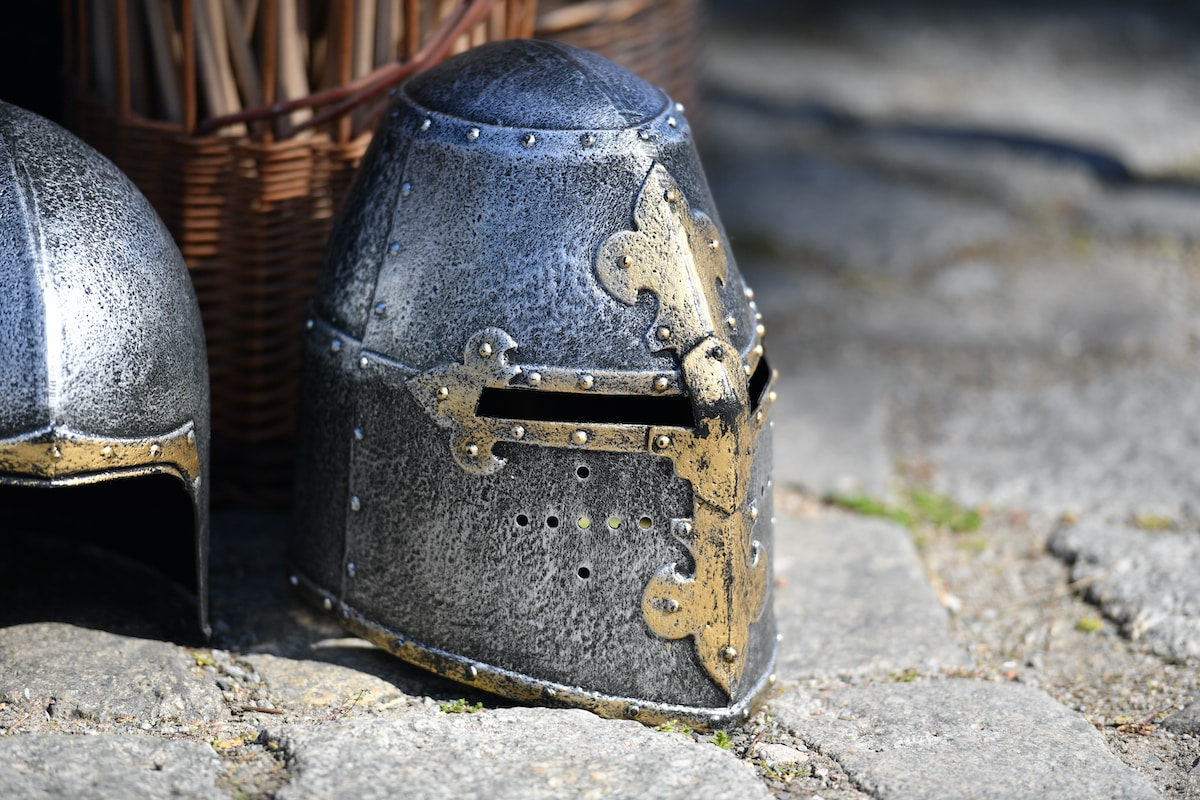 Helmets
Helmets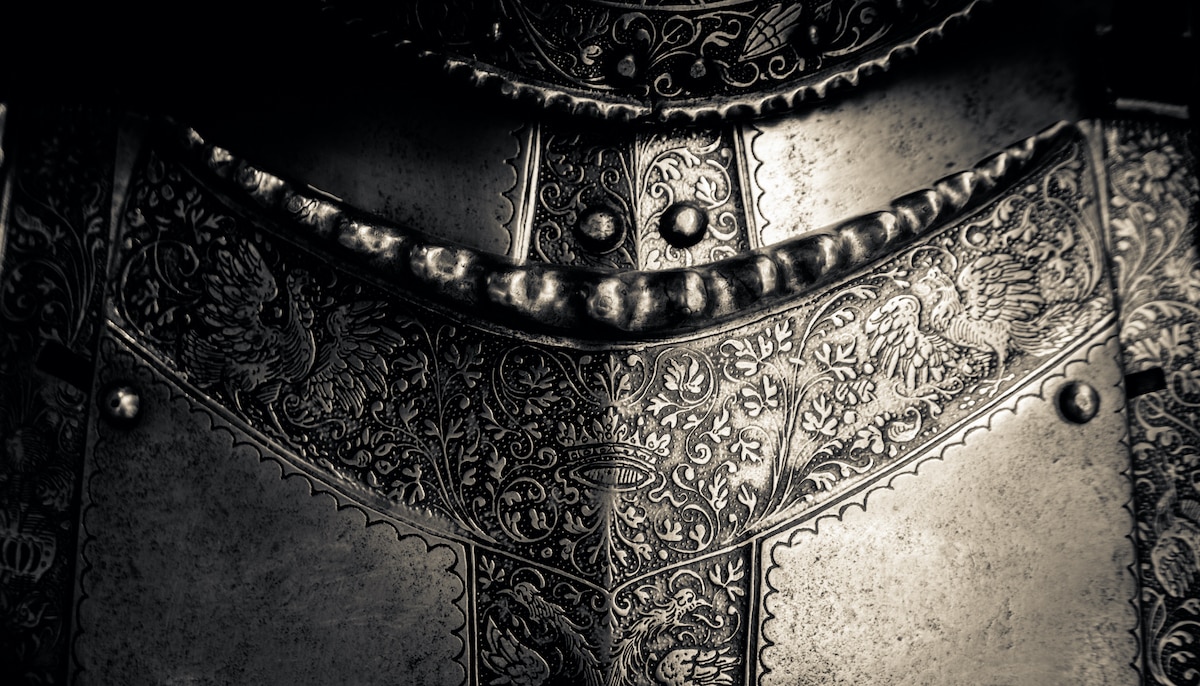 Torso Armor
Torso Armor Bracers and Arm Protection
Bracers and Arm Protection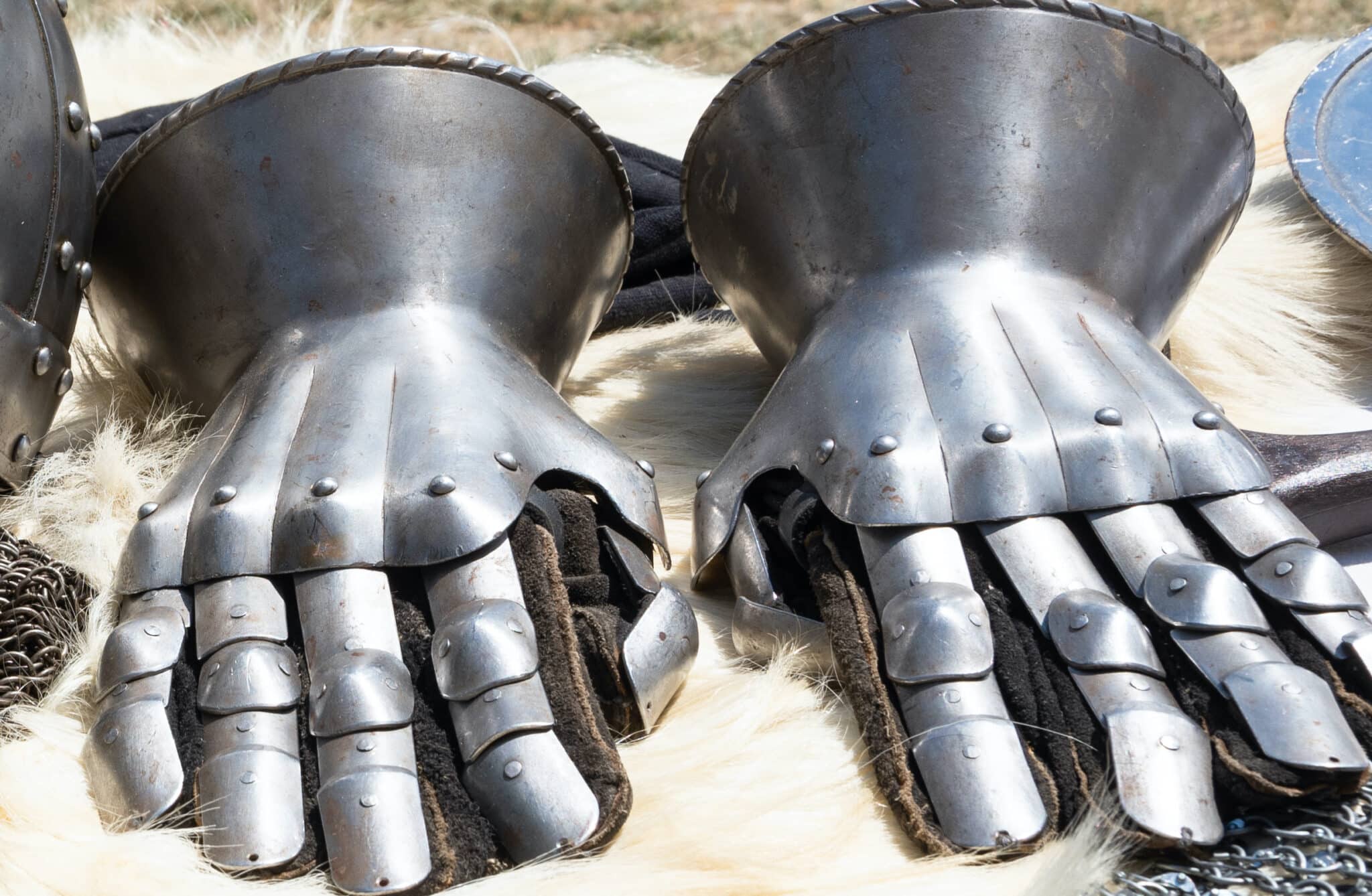 Gauntlets
Gauntlets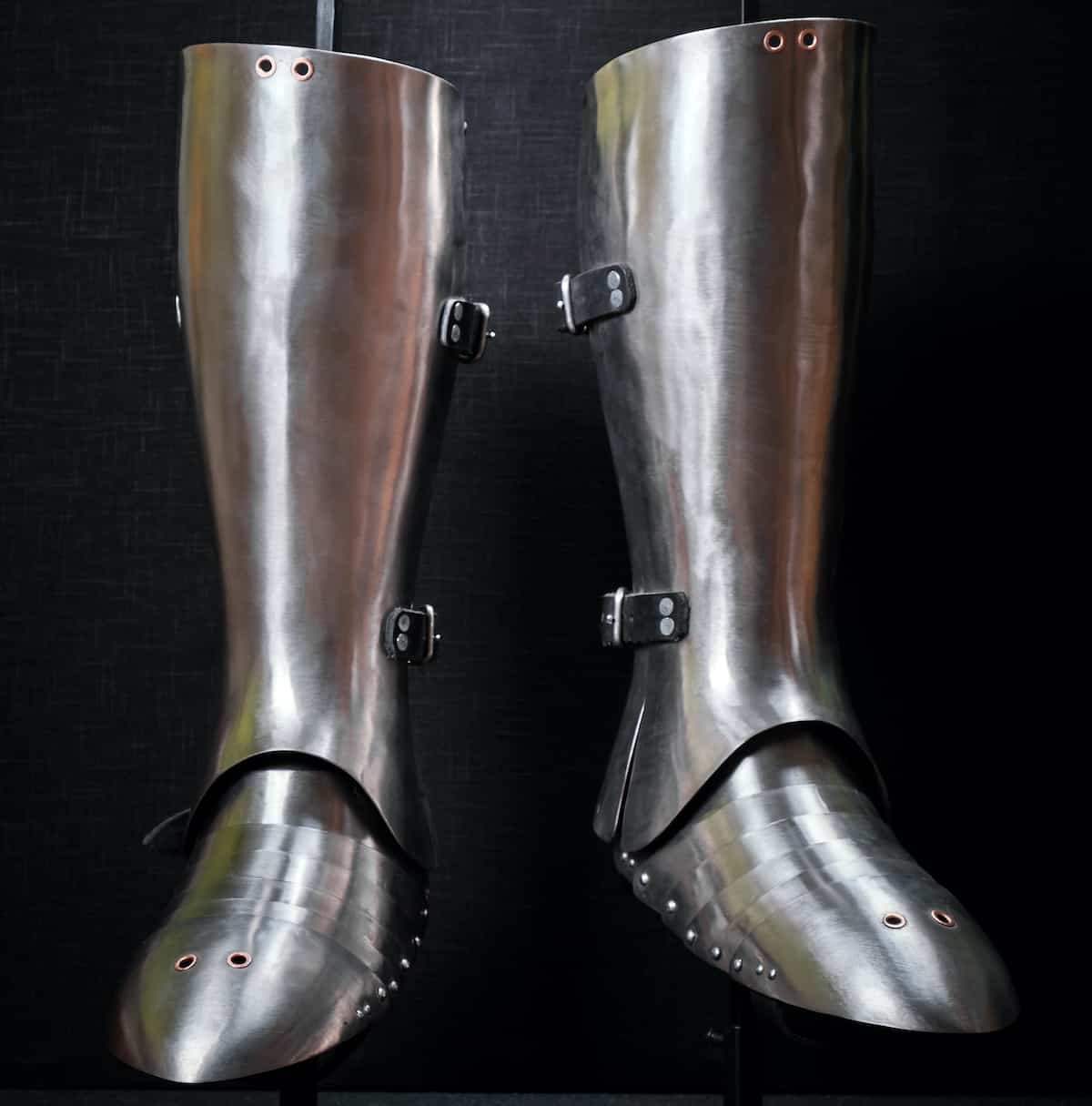 Leg Armor
Leg Armor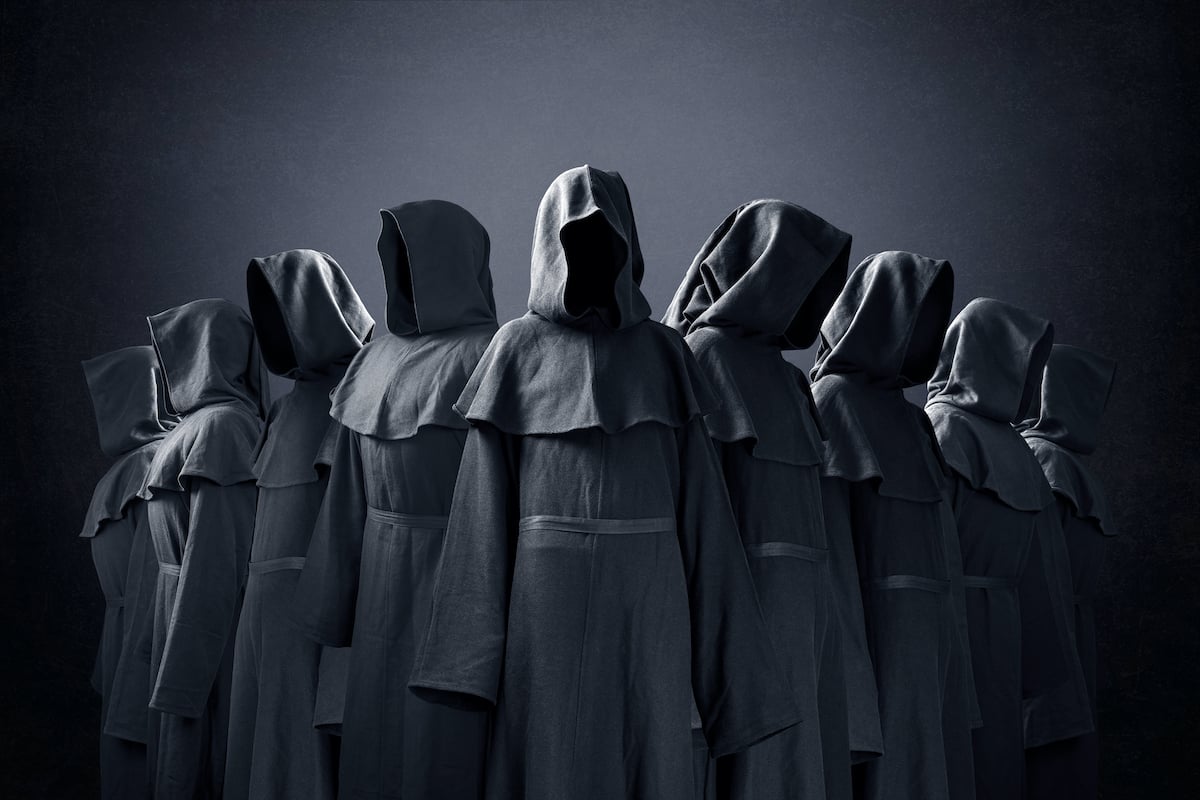 Cloaks
Cloaks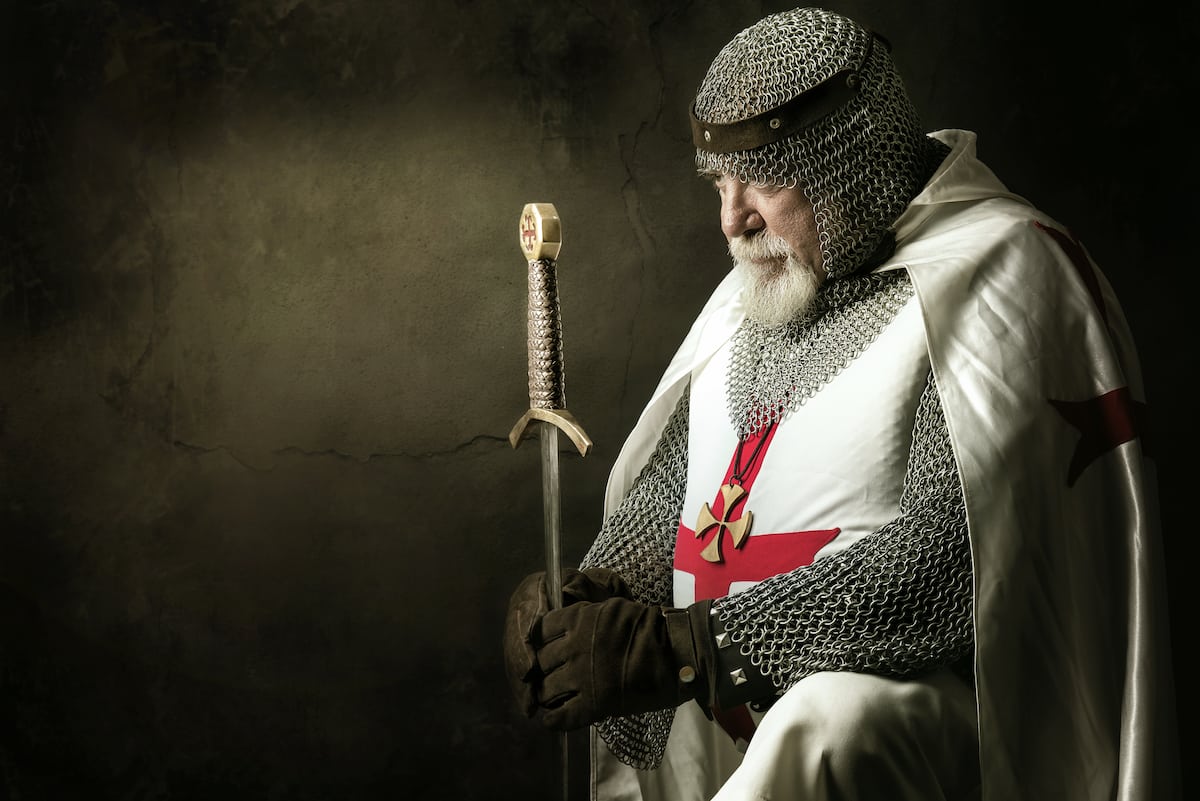 Tabards
Tabards Shirts
Shirts Tunics
Tunics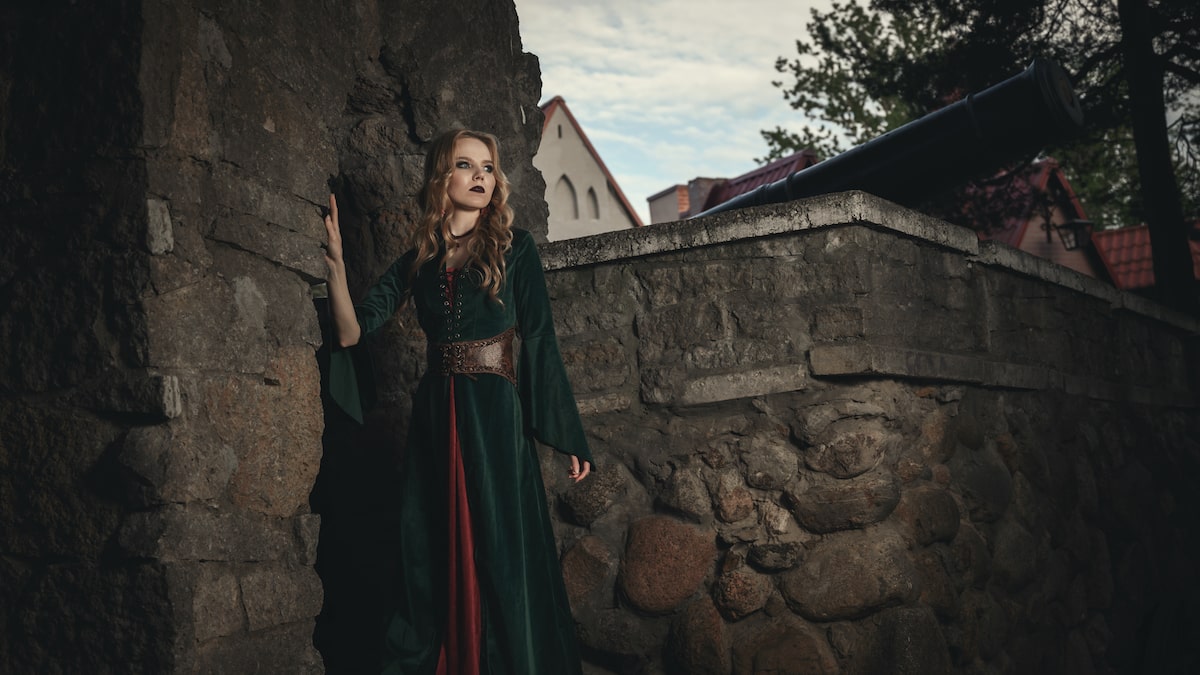 Dresses
Dresses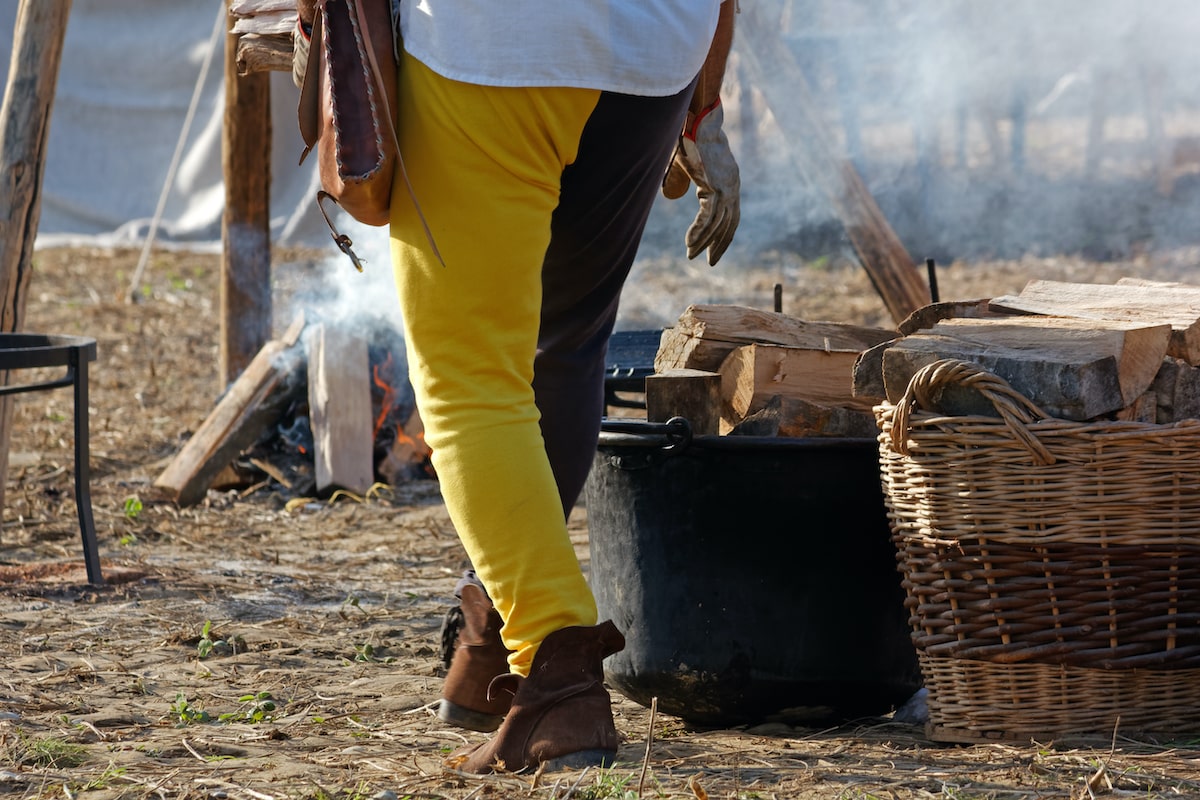 Pants
Pants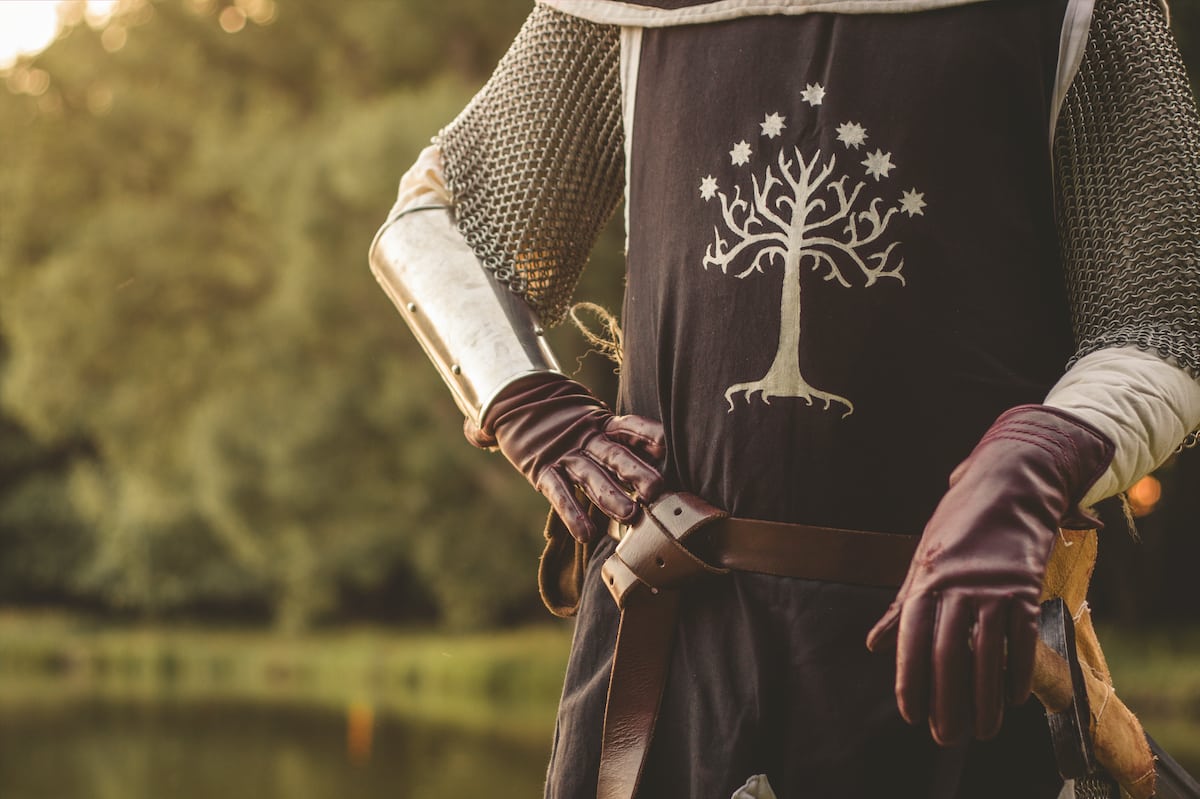 Gloves
Gloves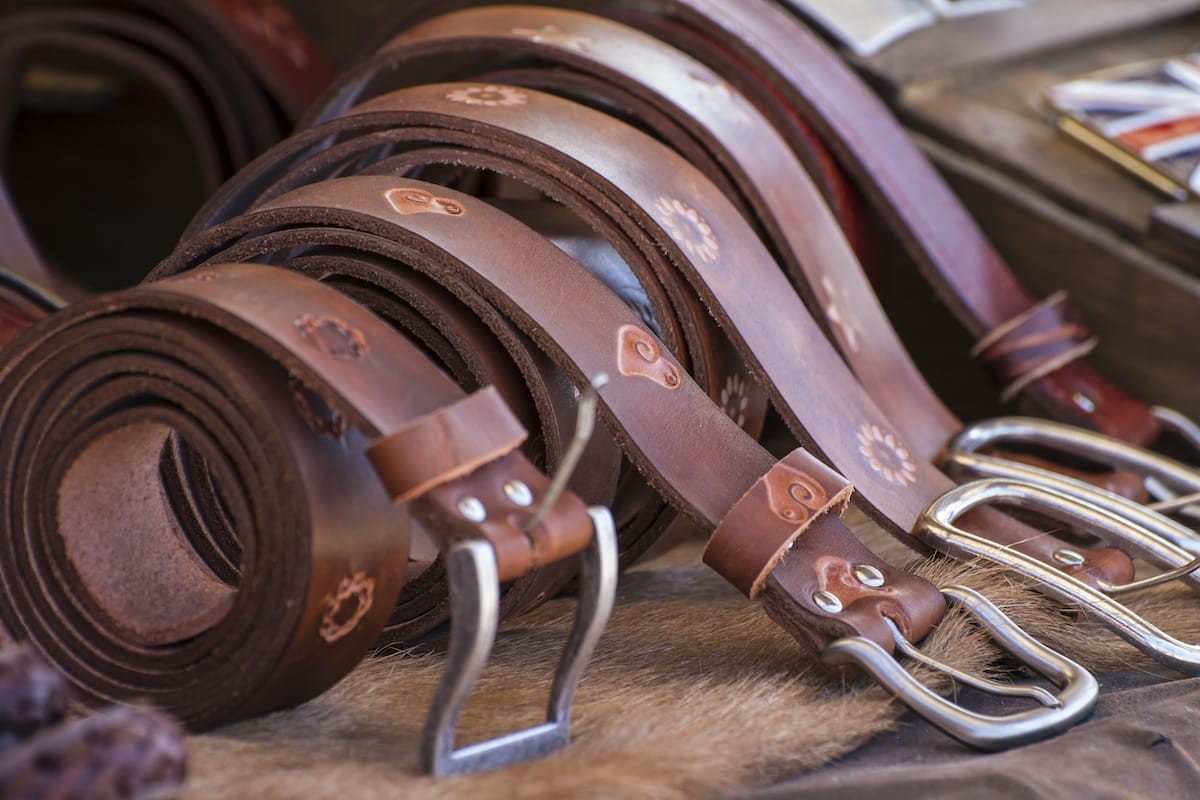 Belts
Belts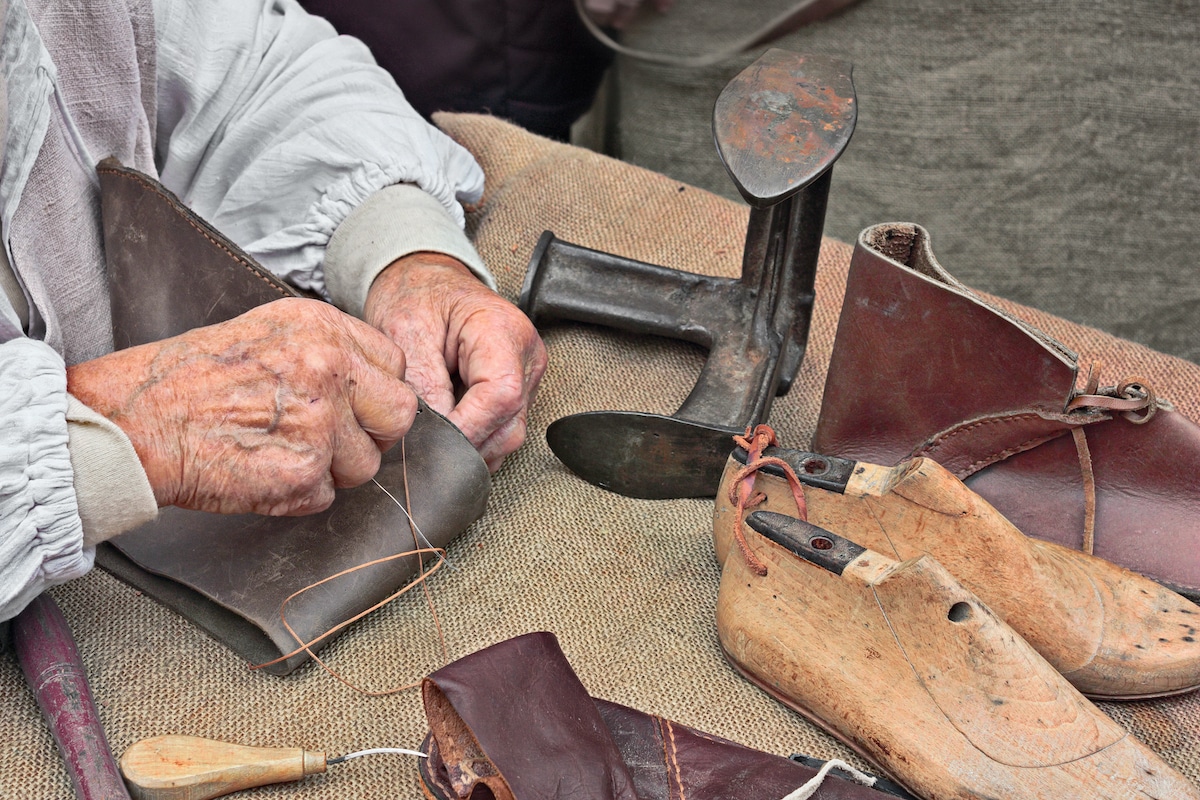 Shoes
Shoes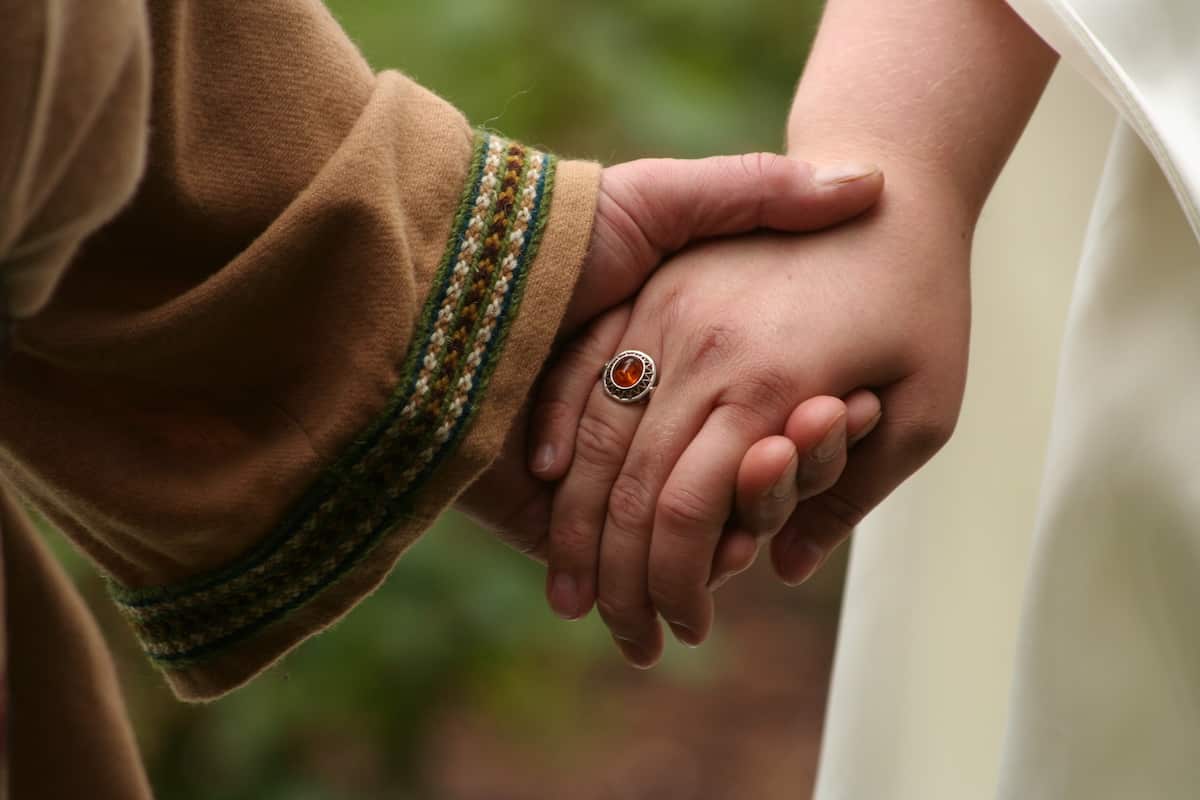 Rings
Rings Necklaces & Pendants
Necklaces & Pendants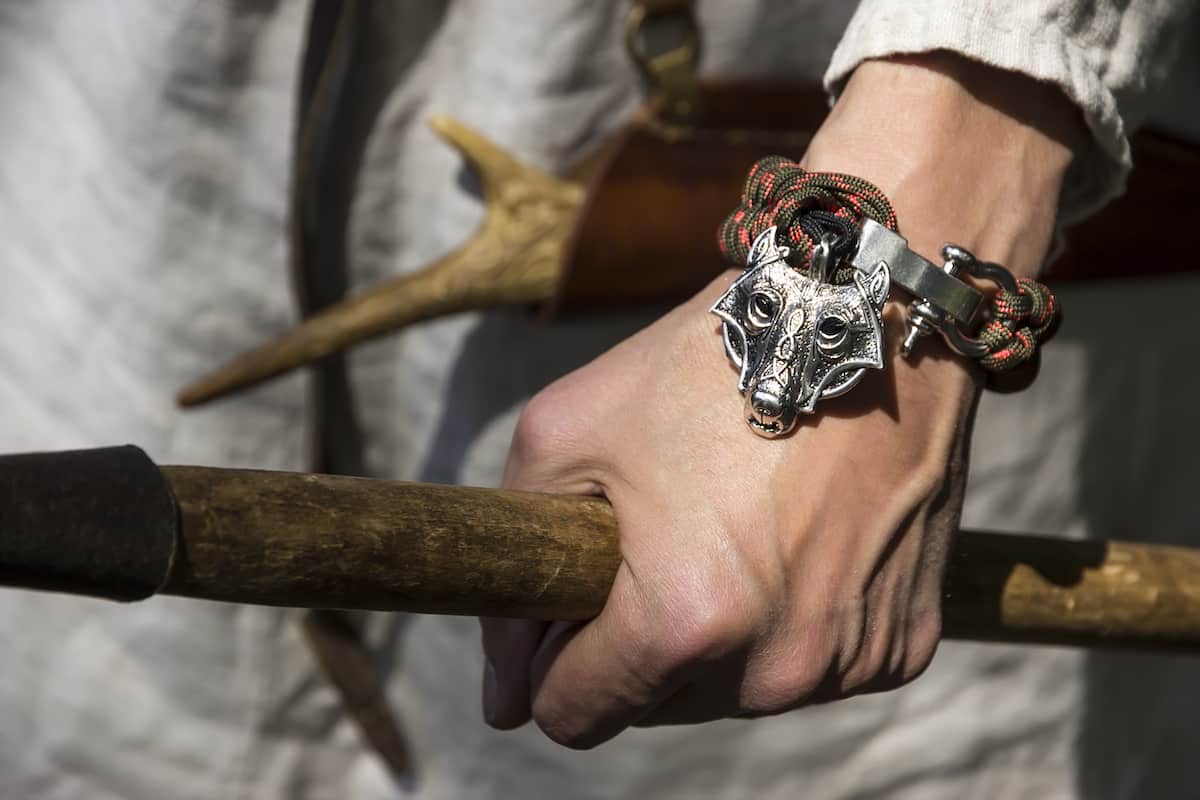 Bracelets
Bracelets